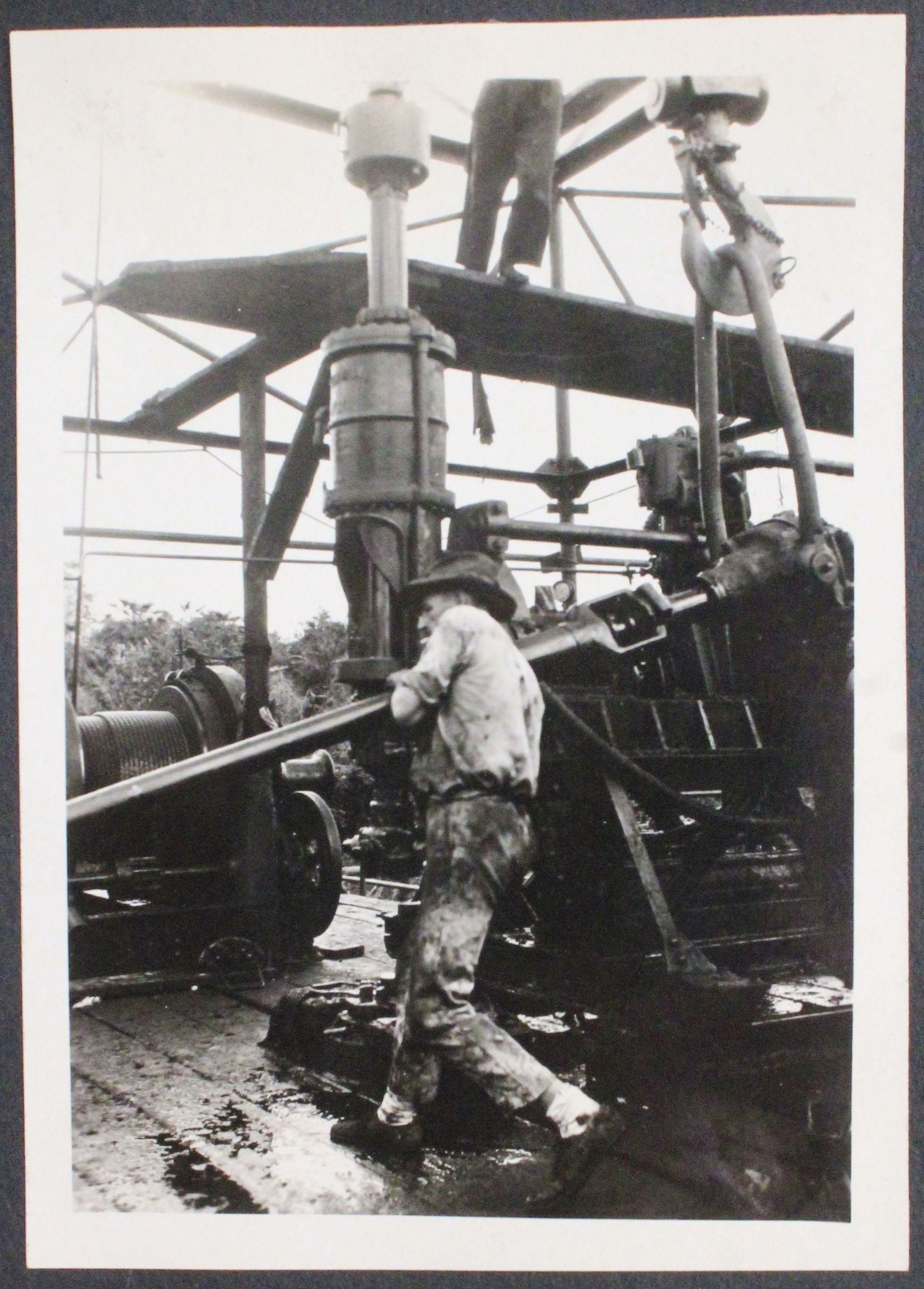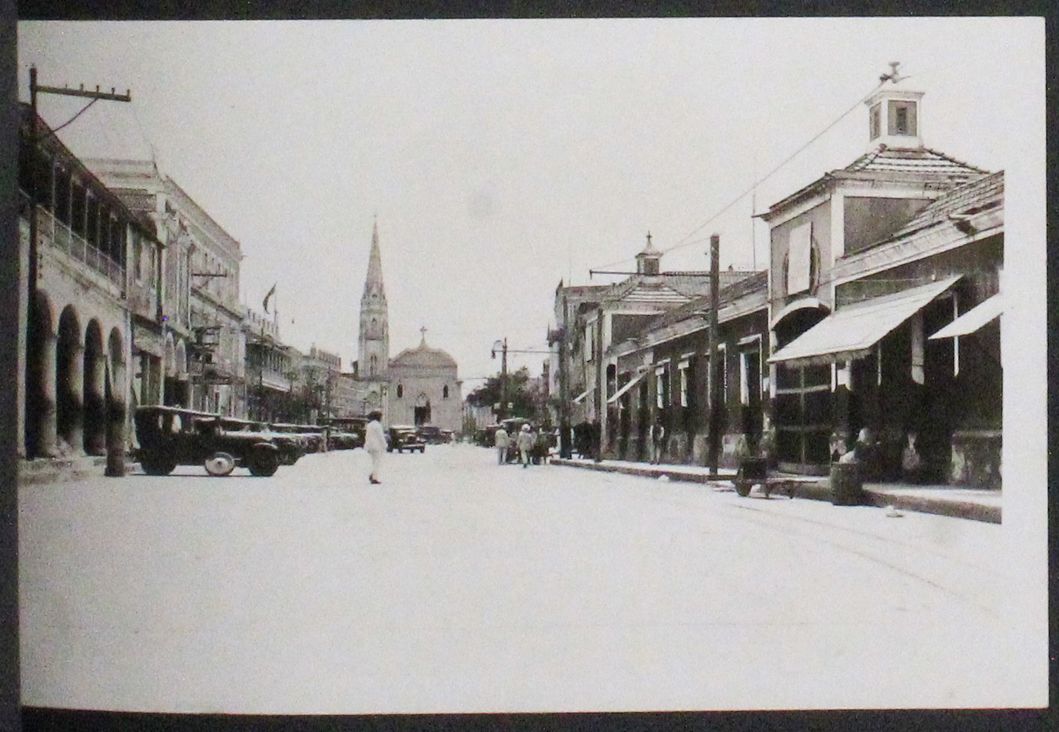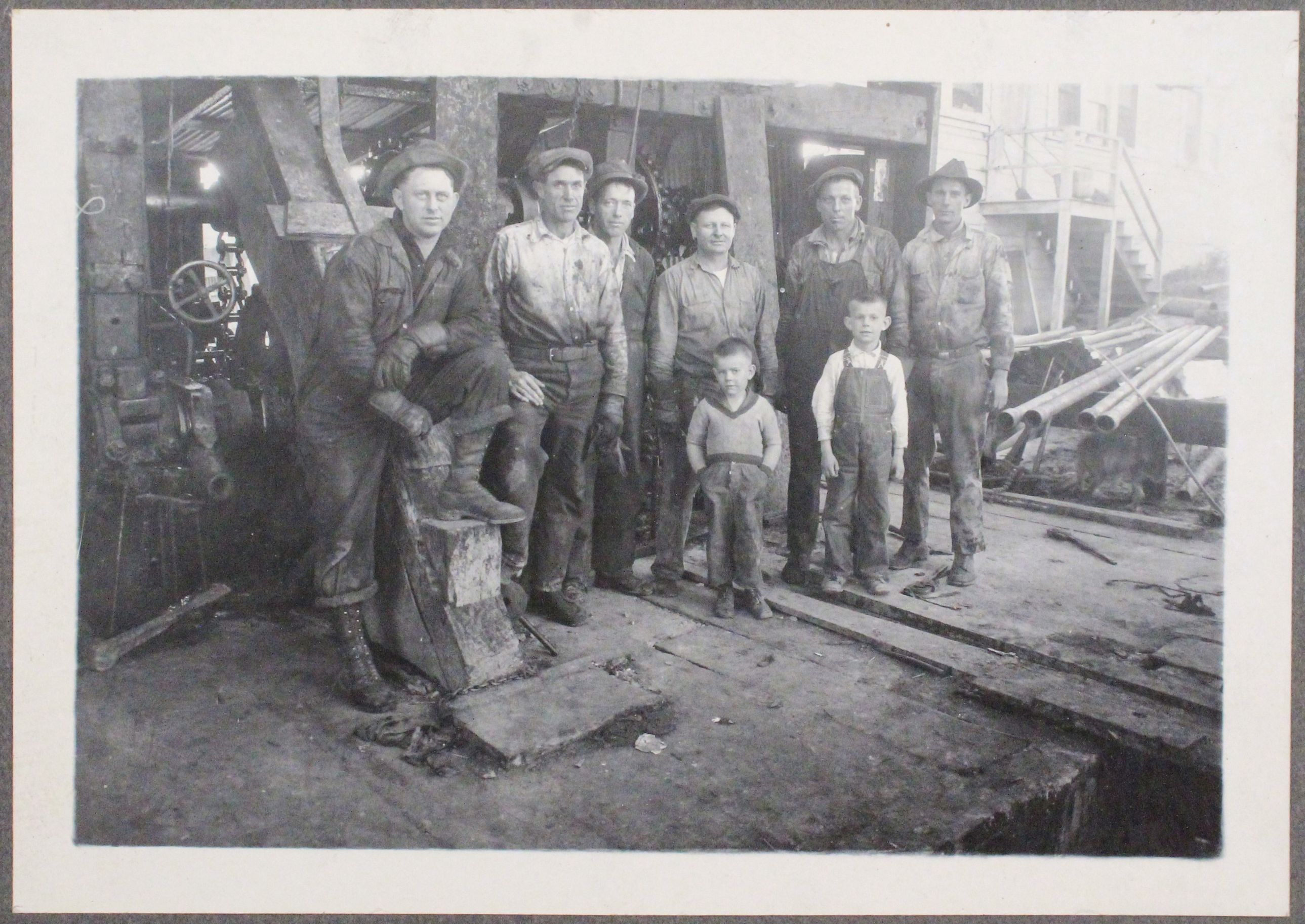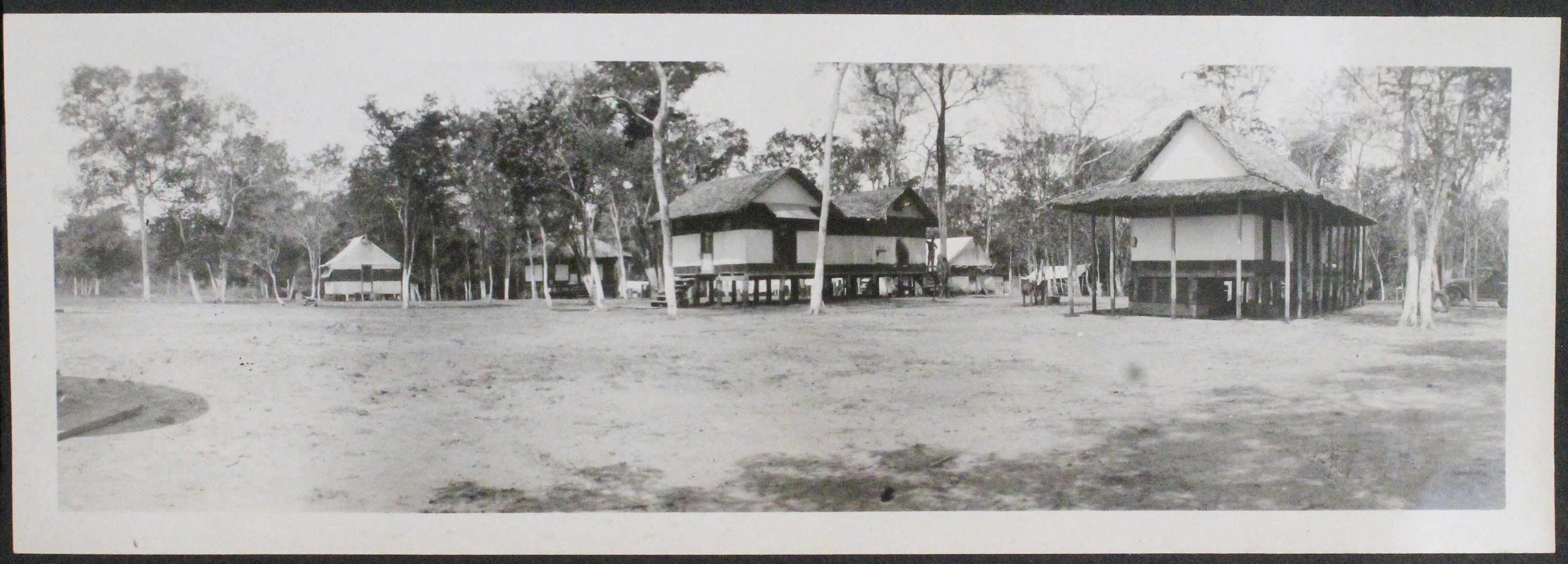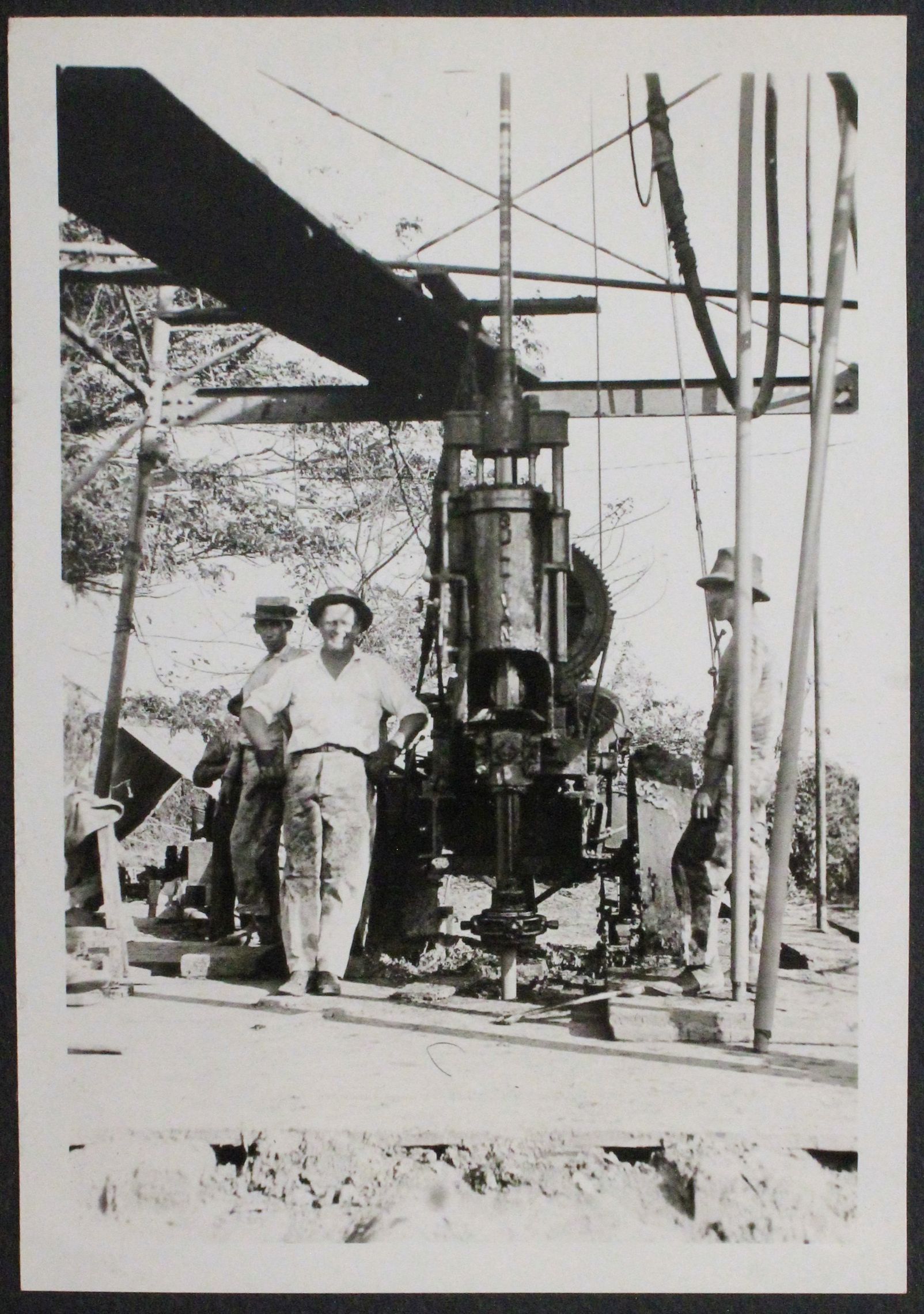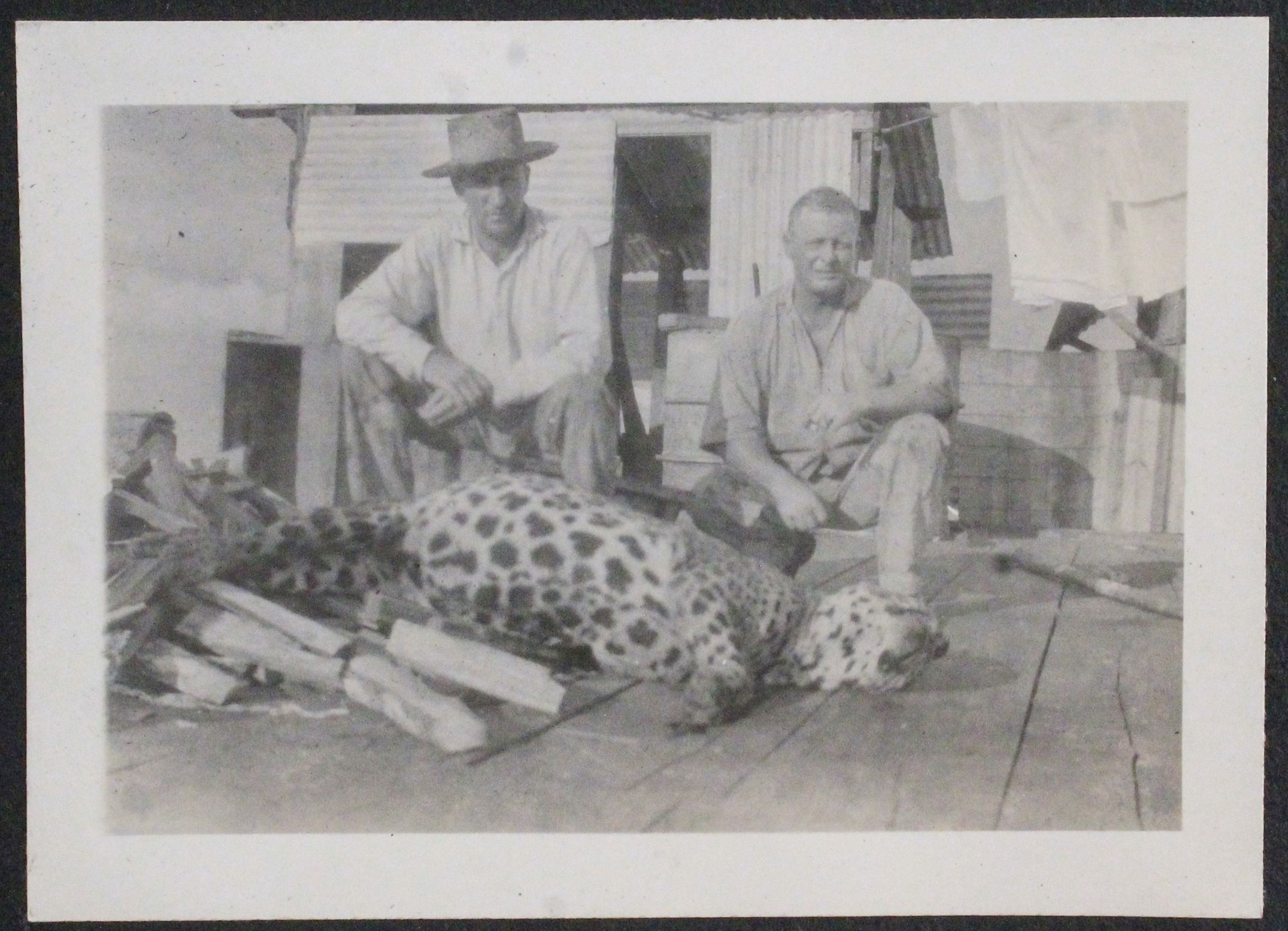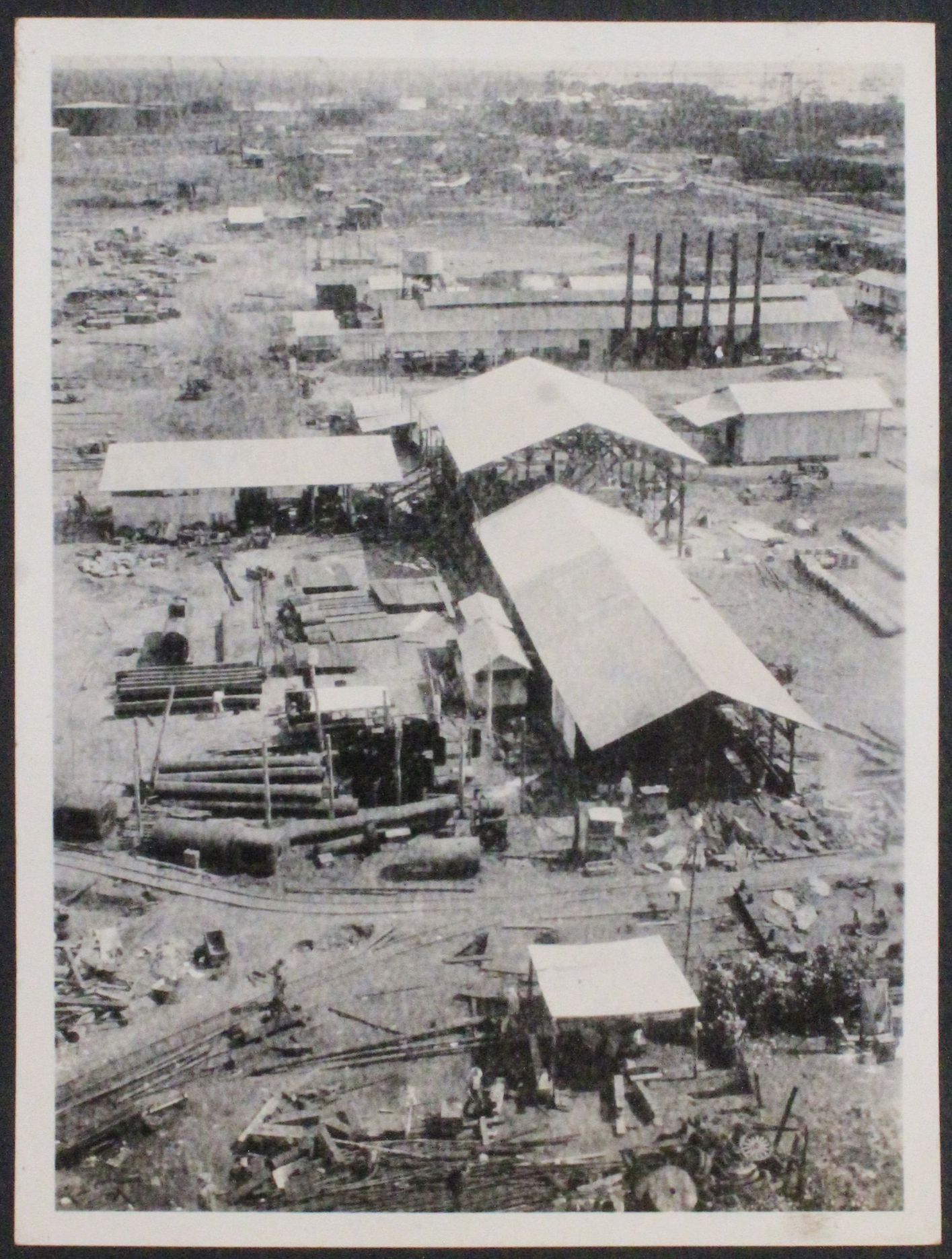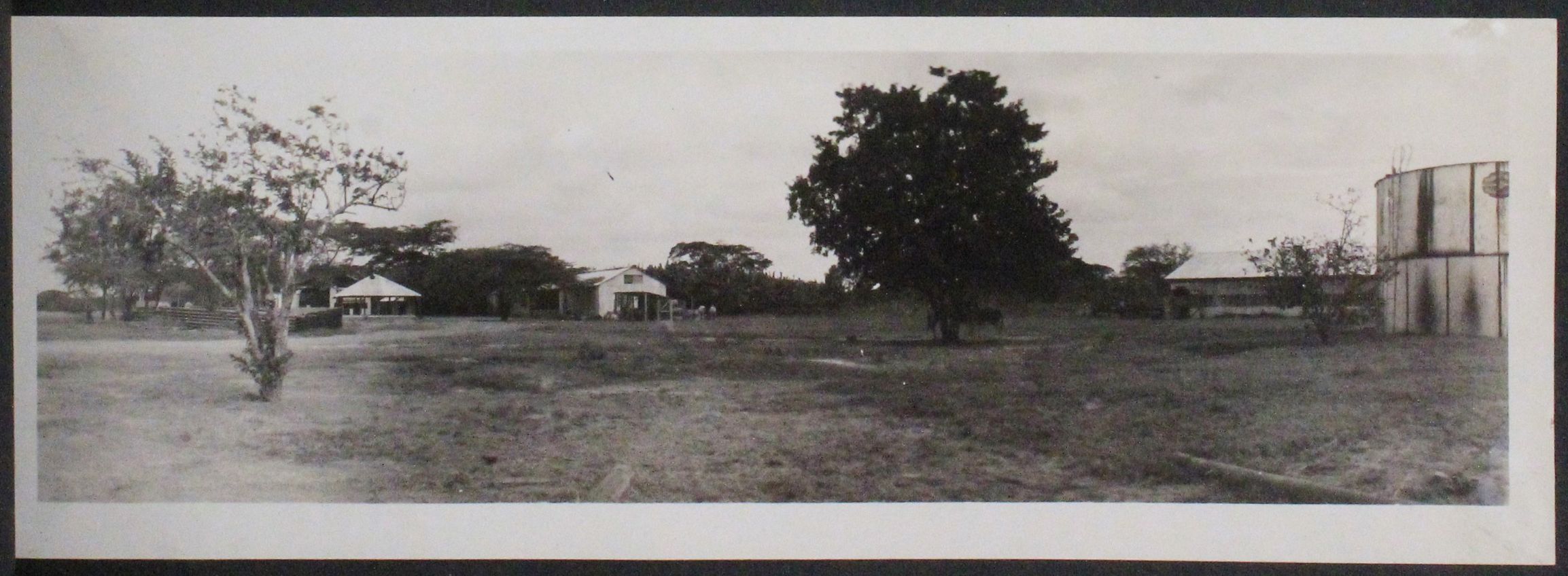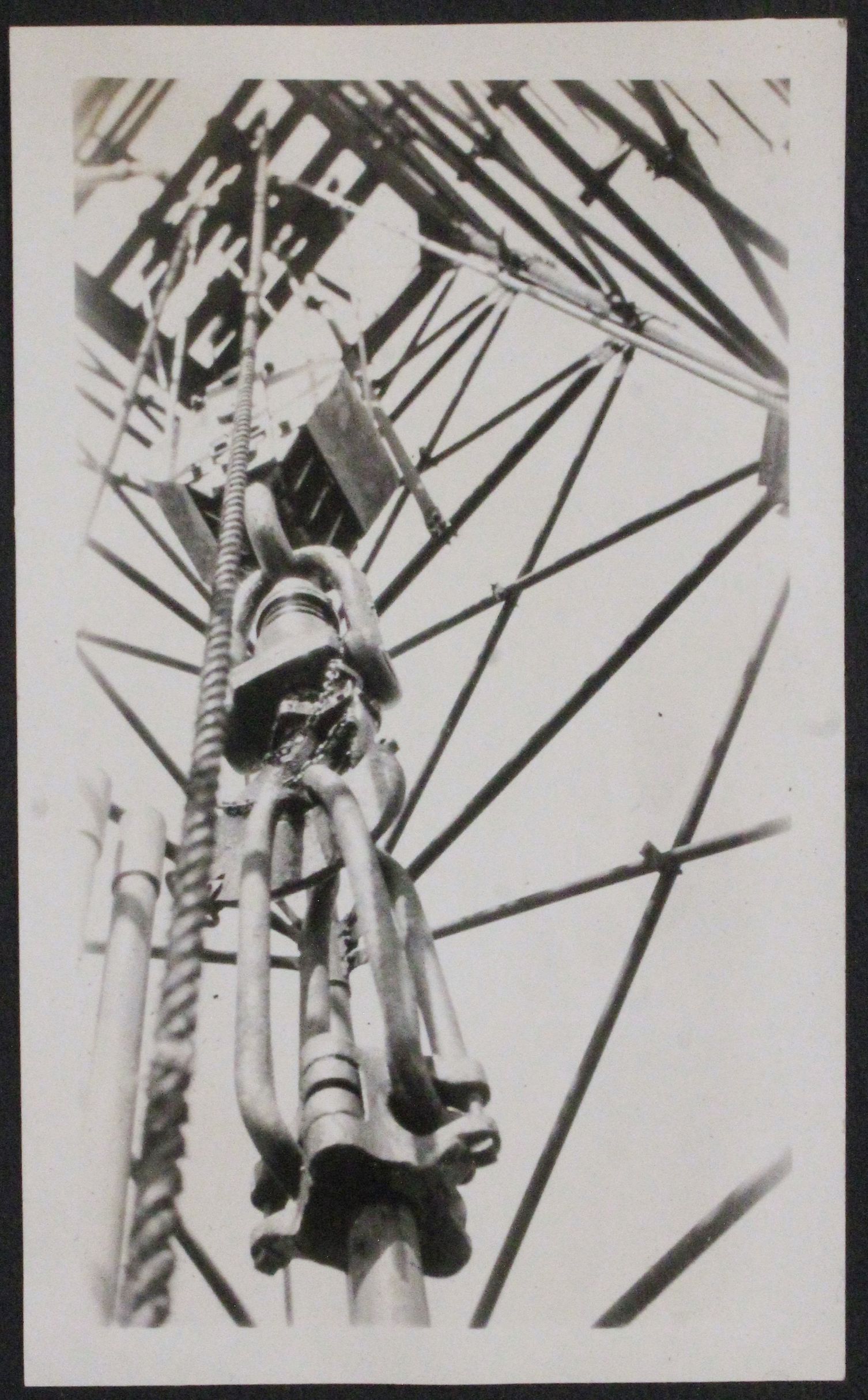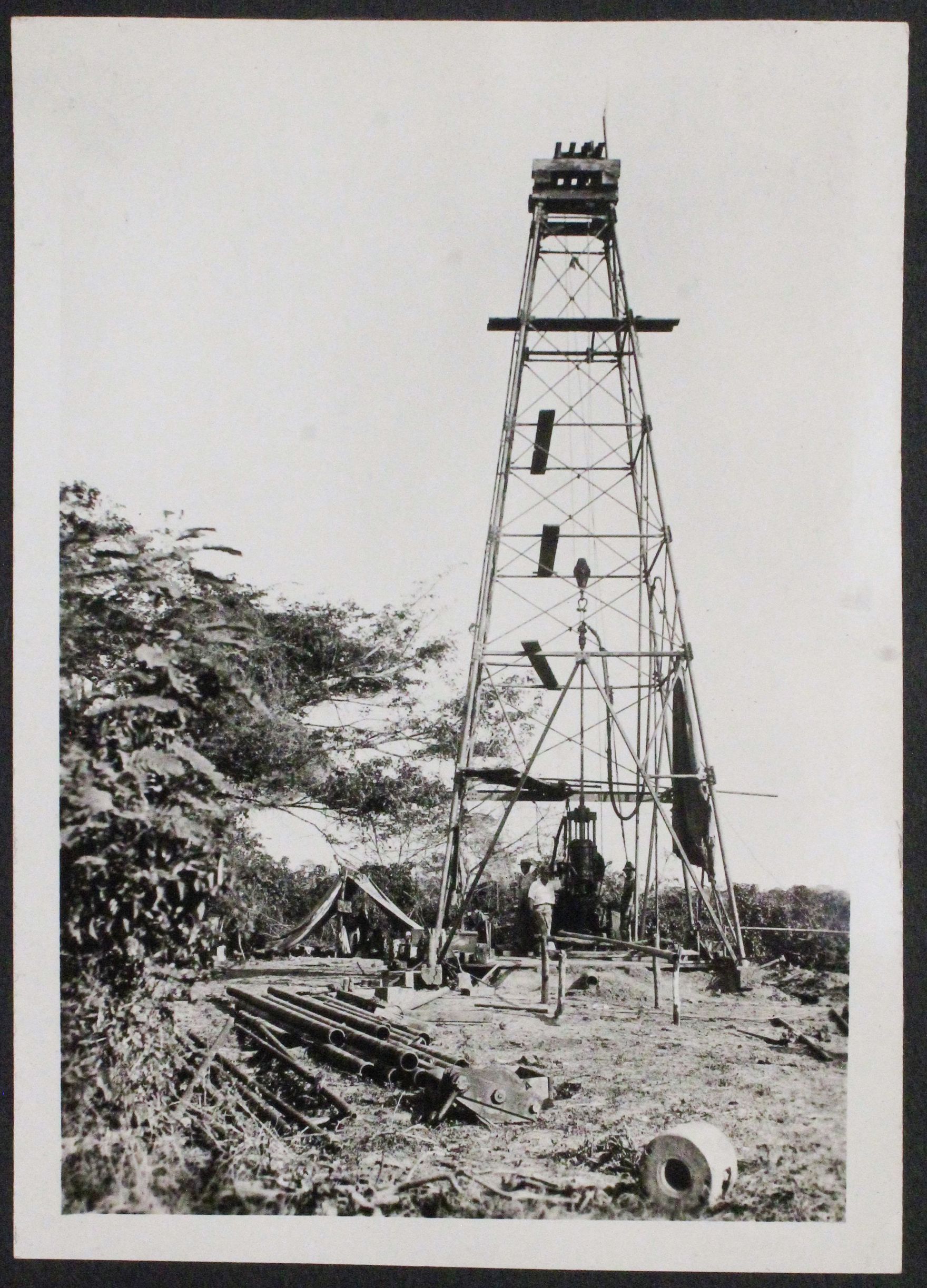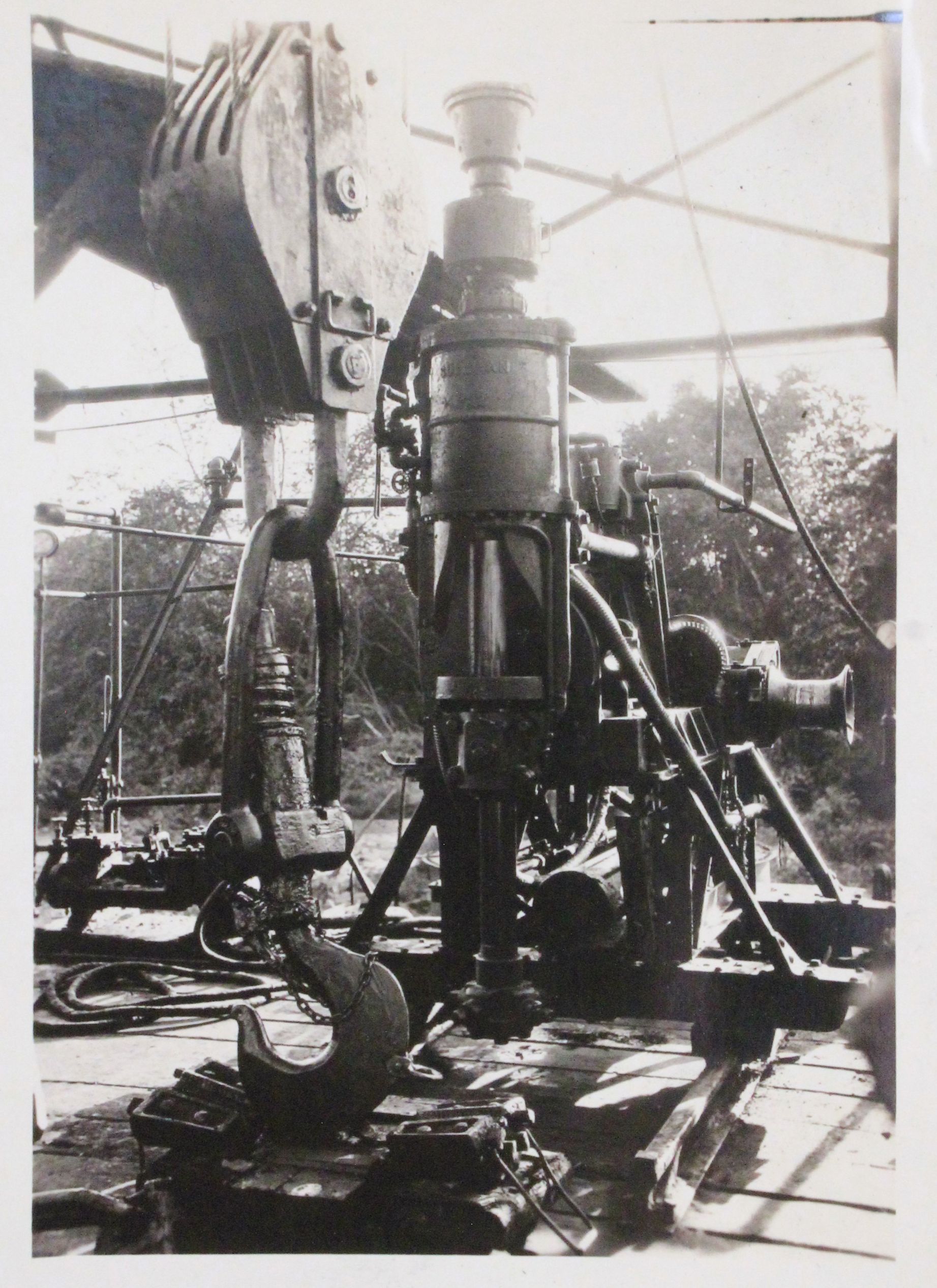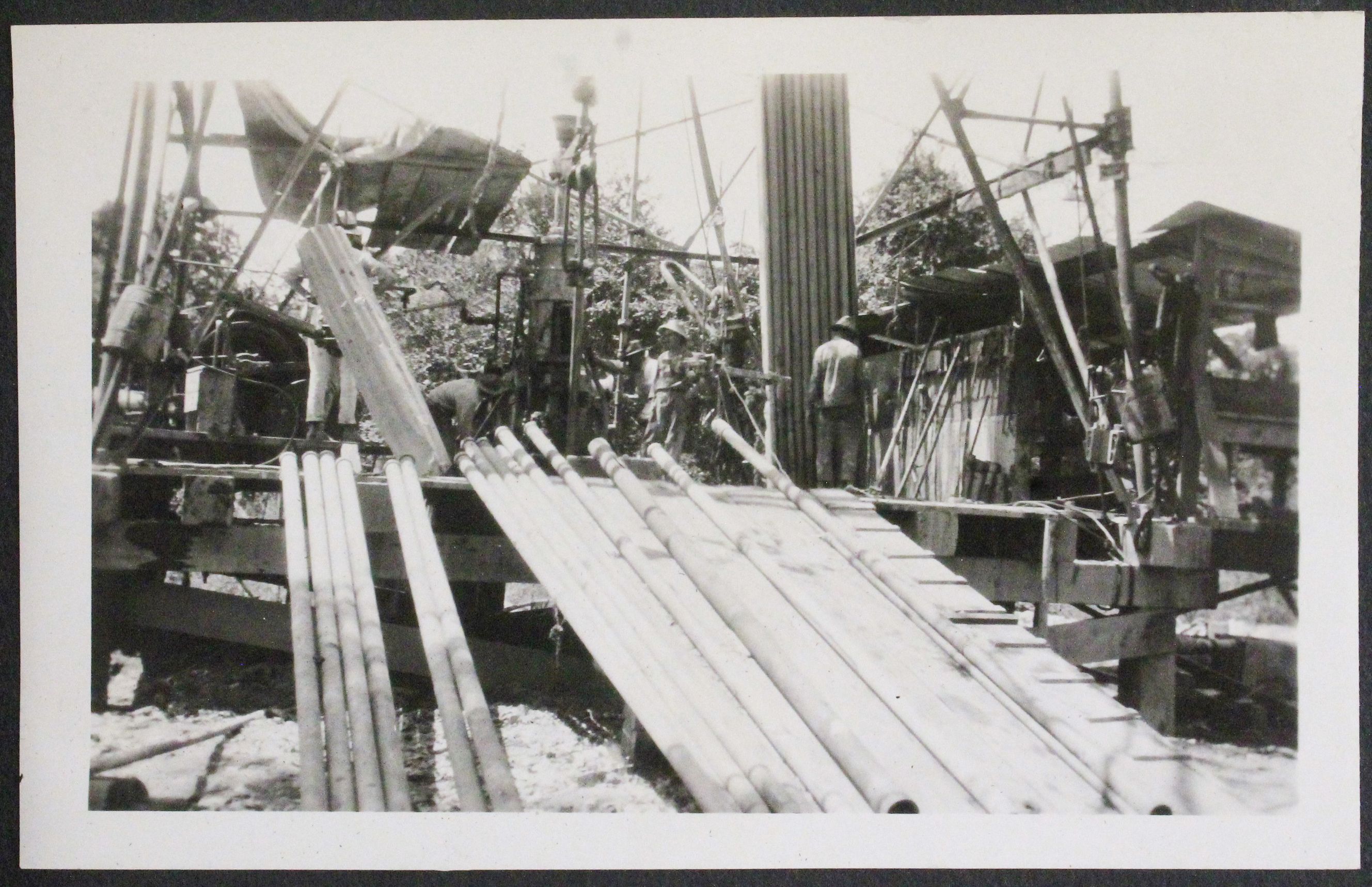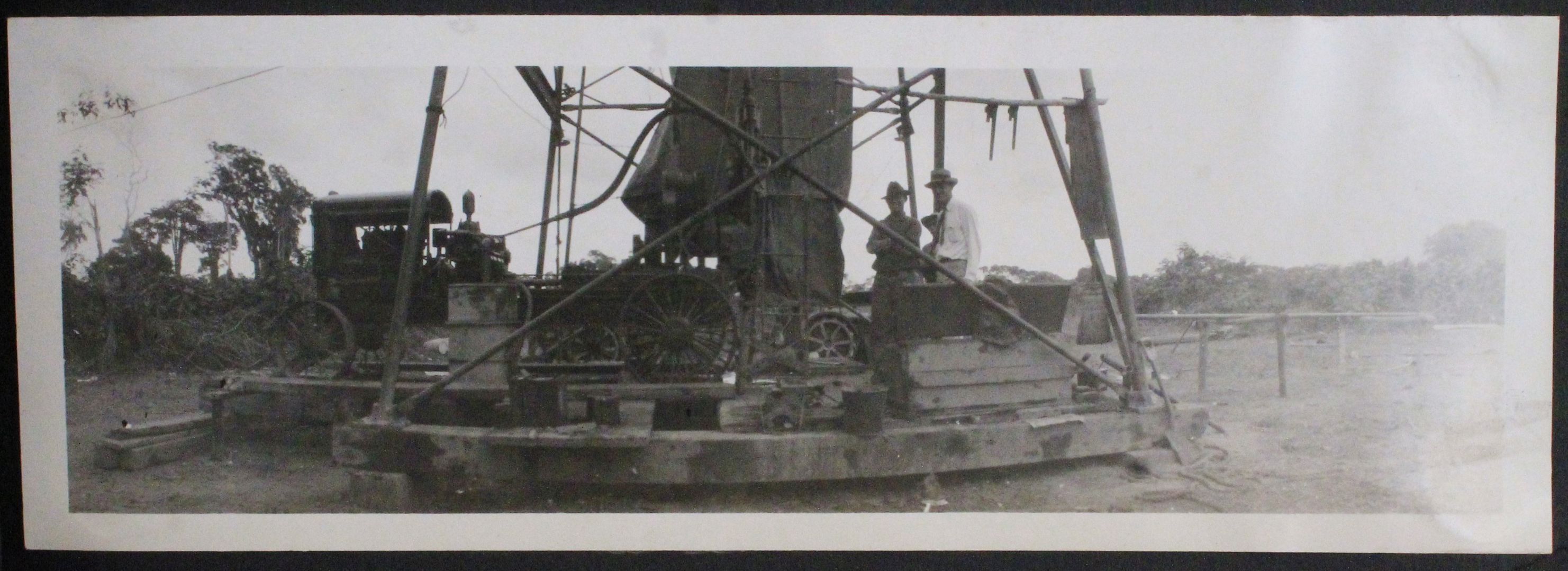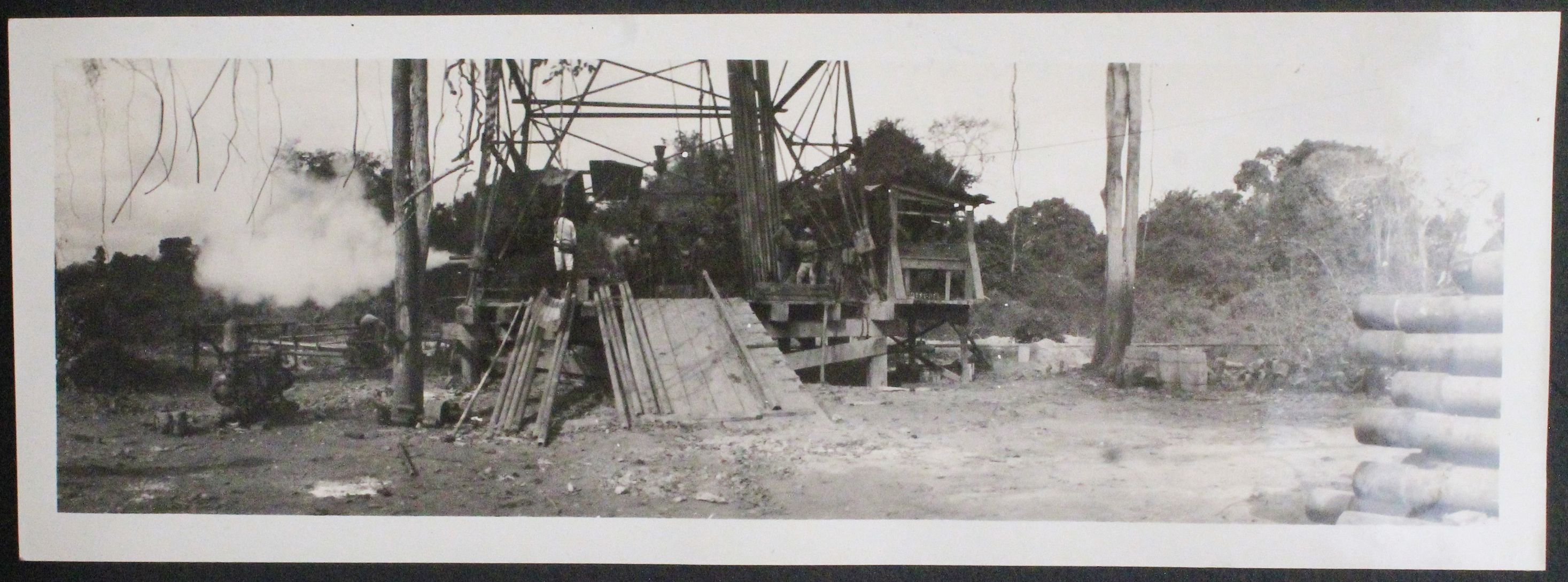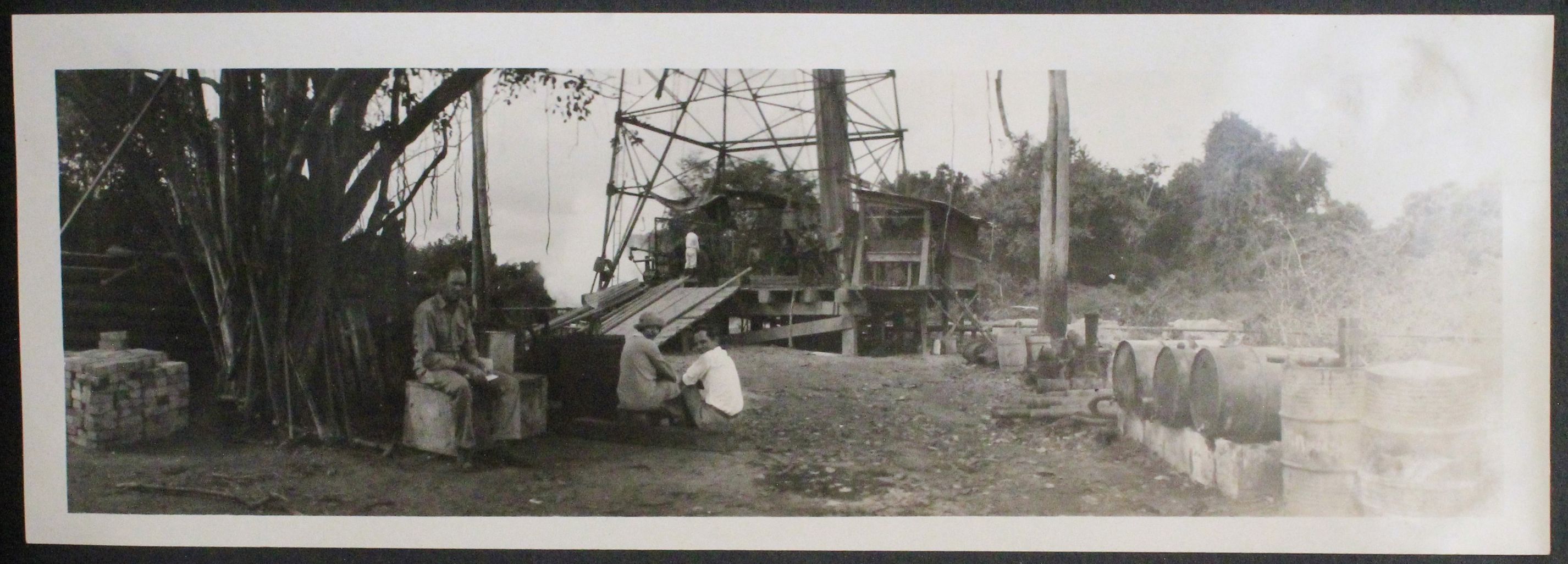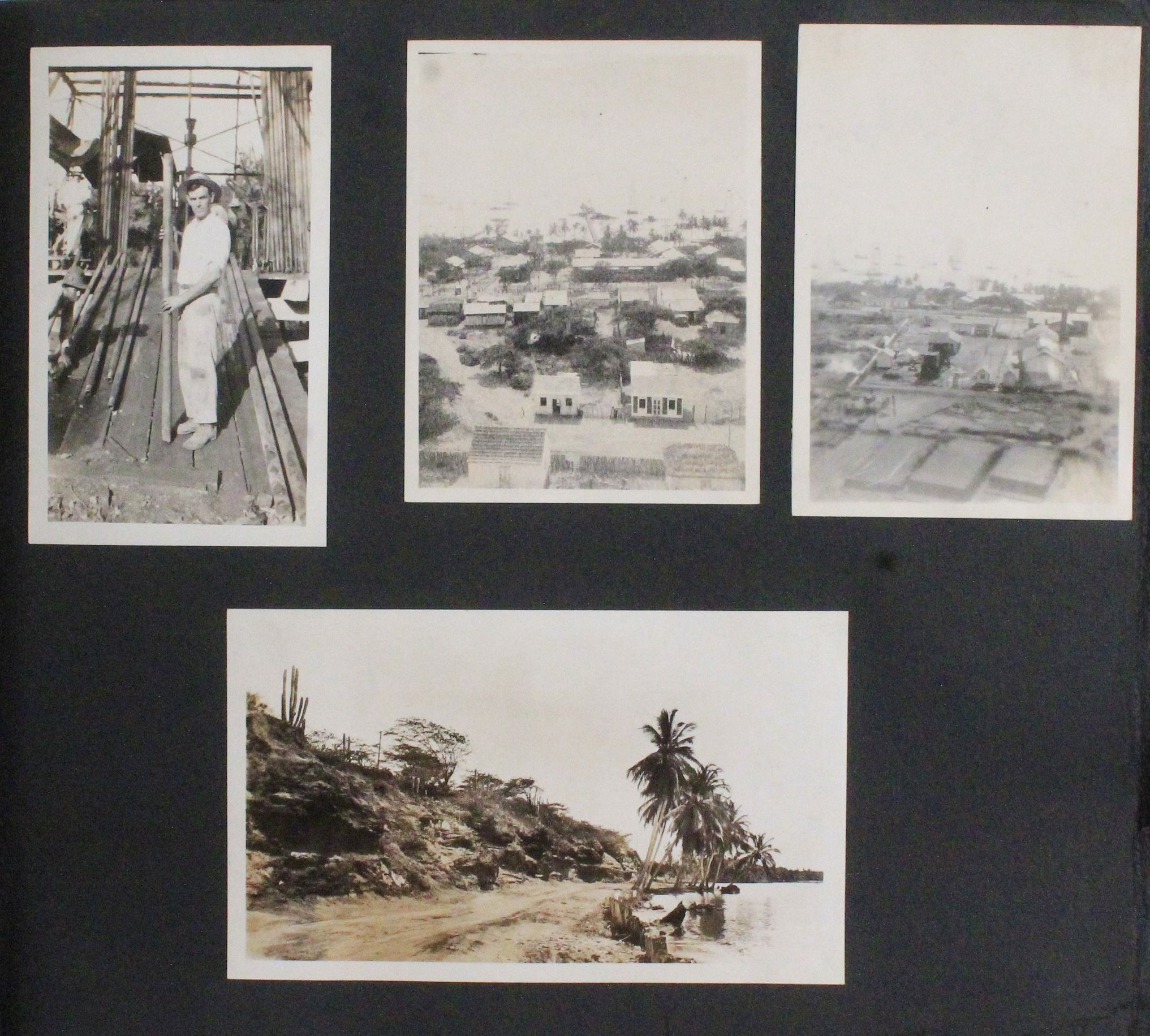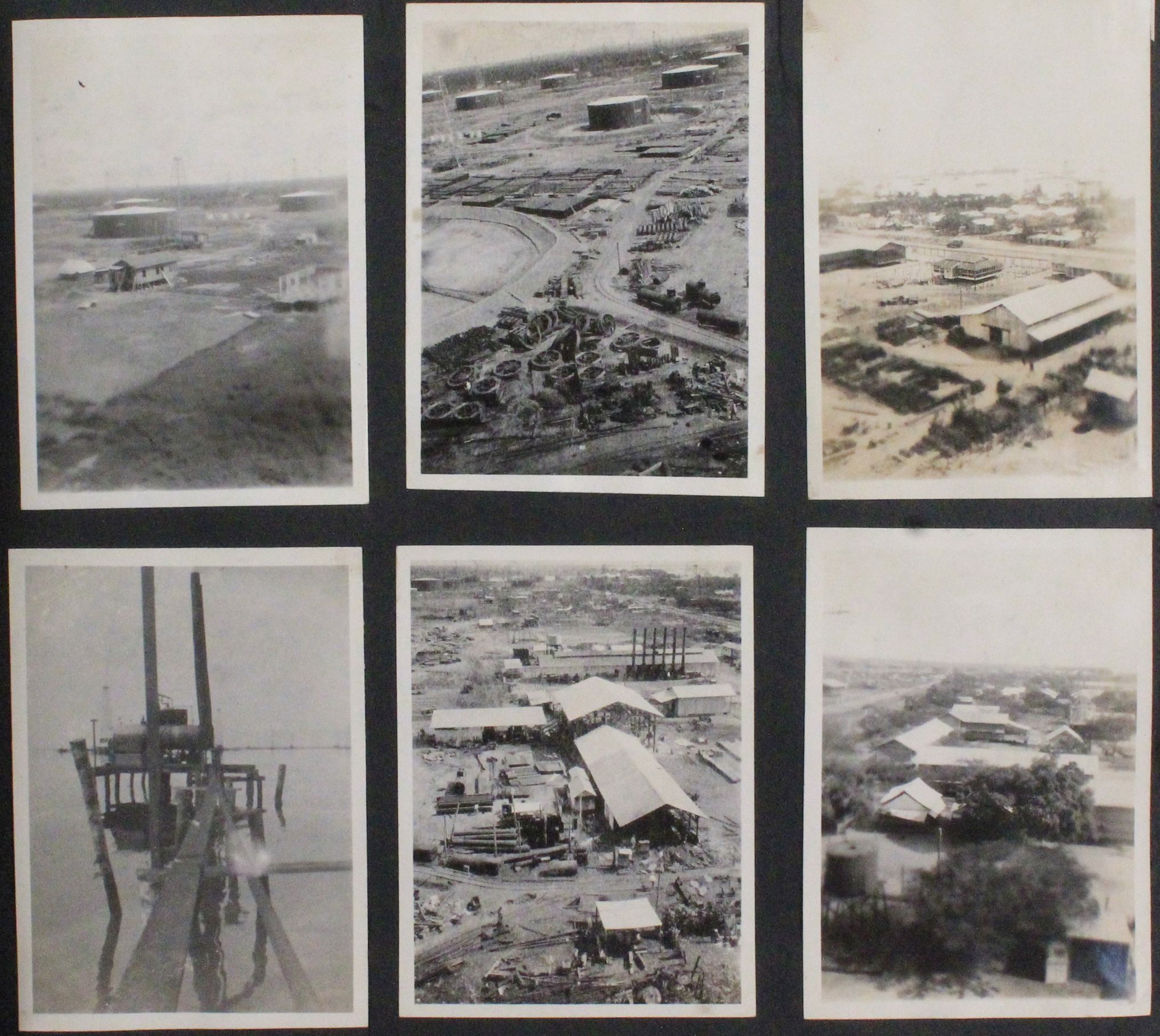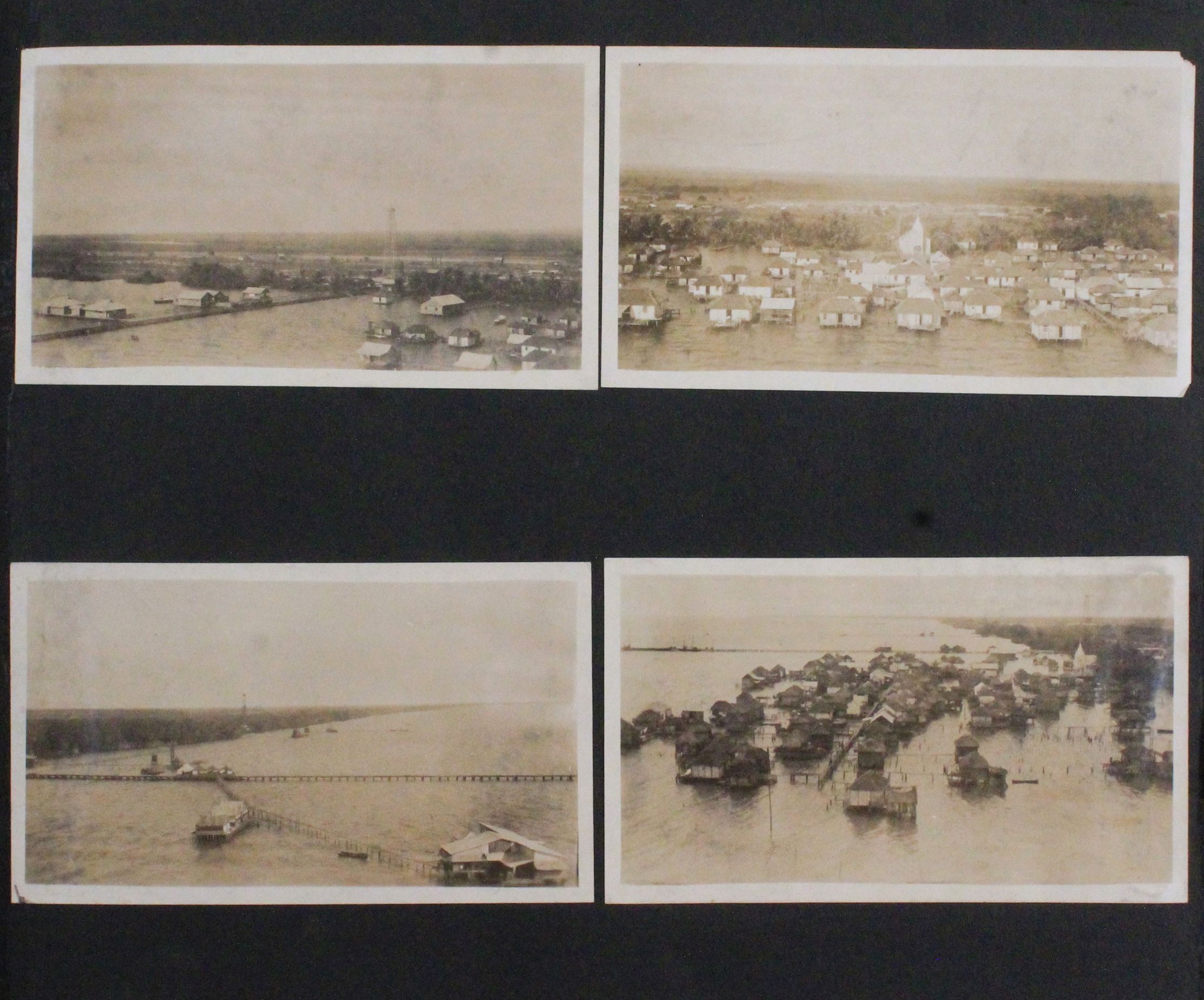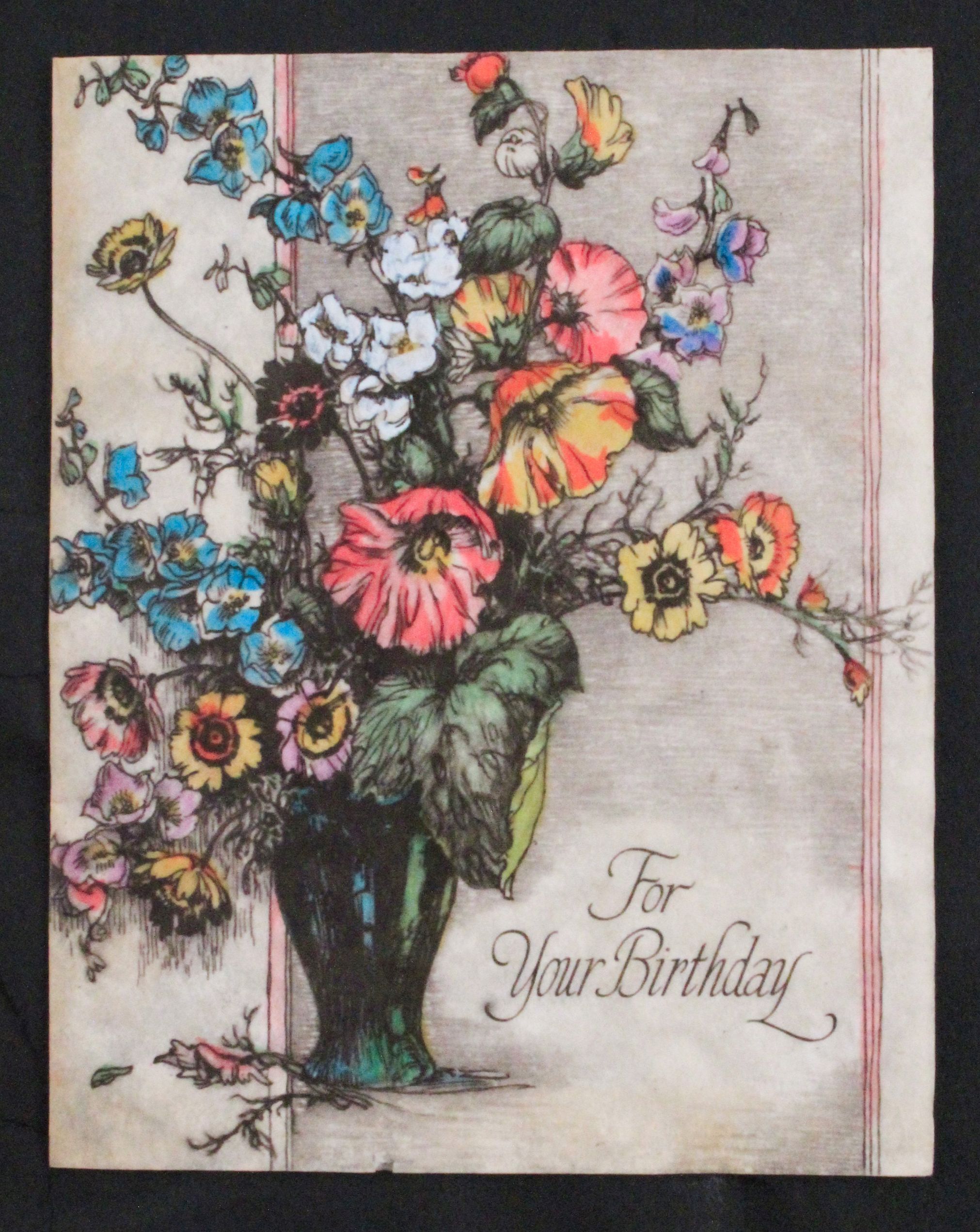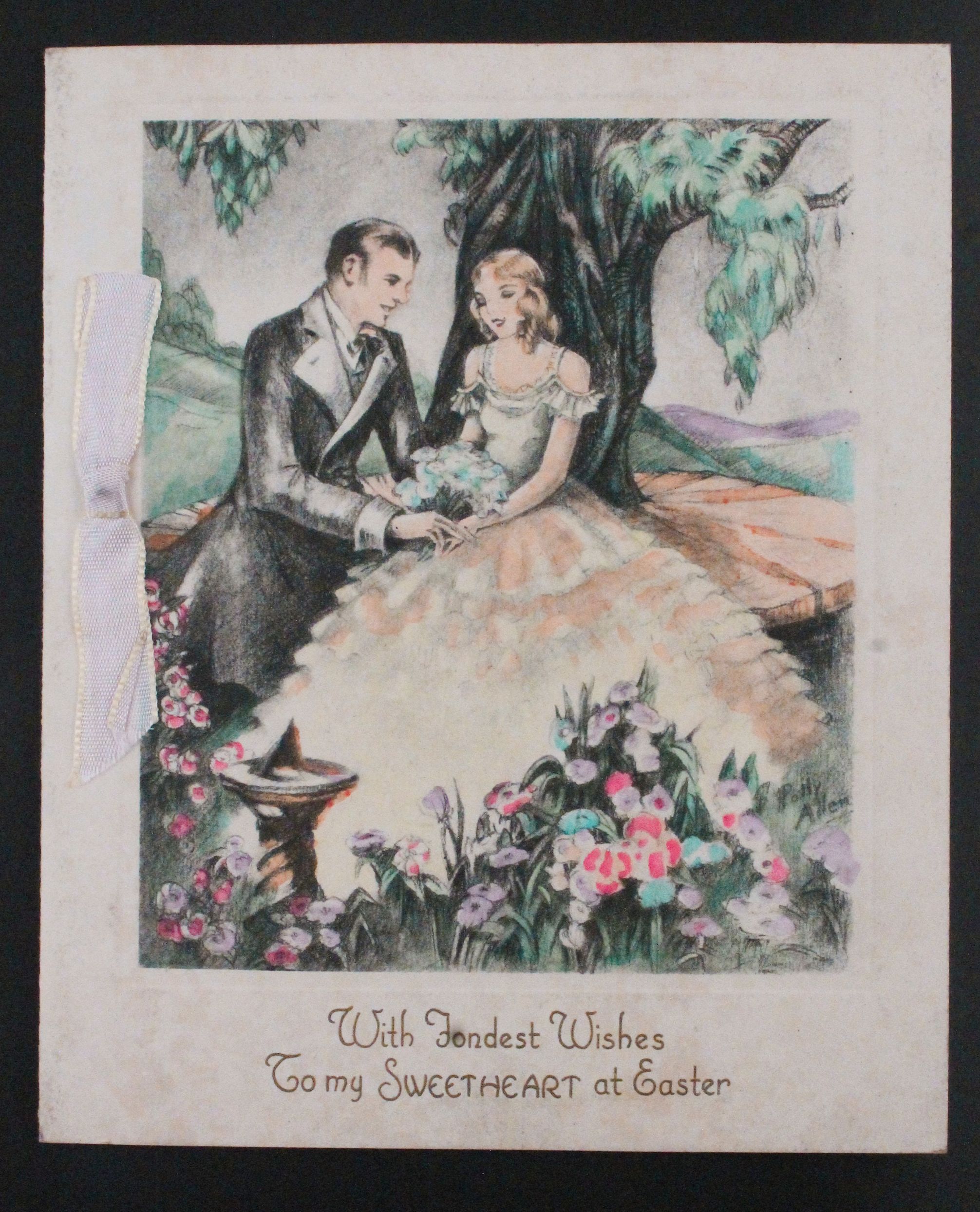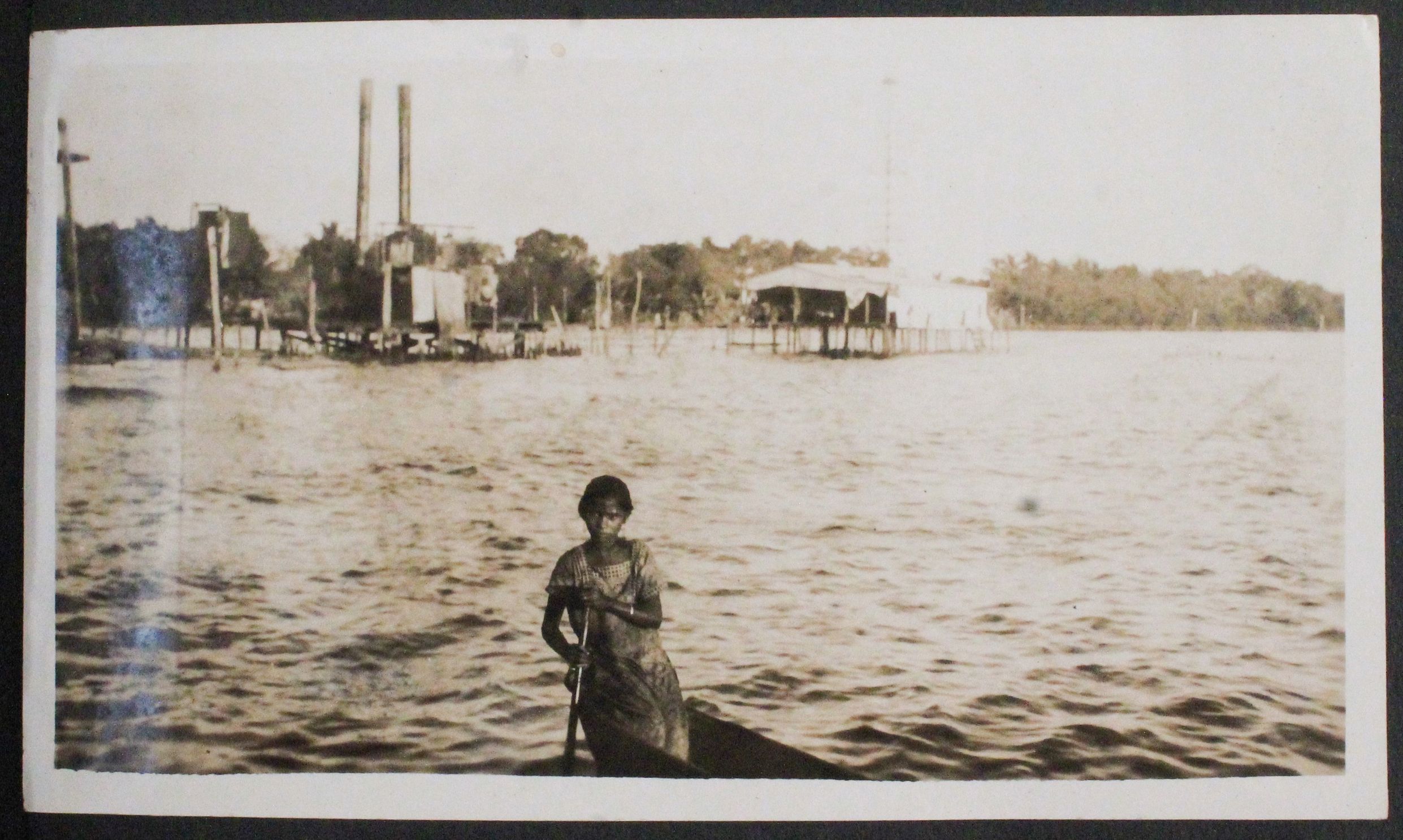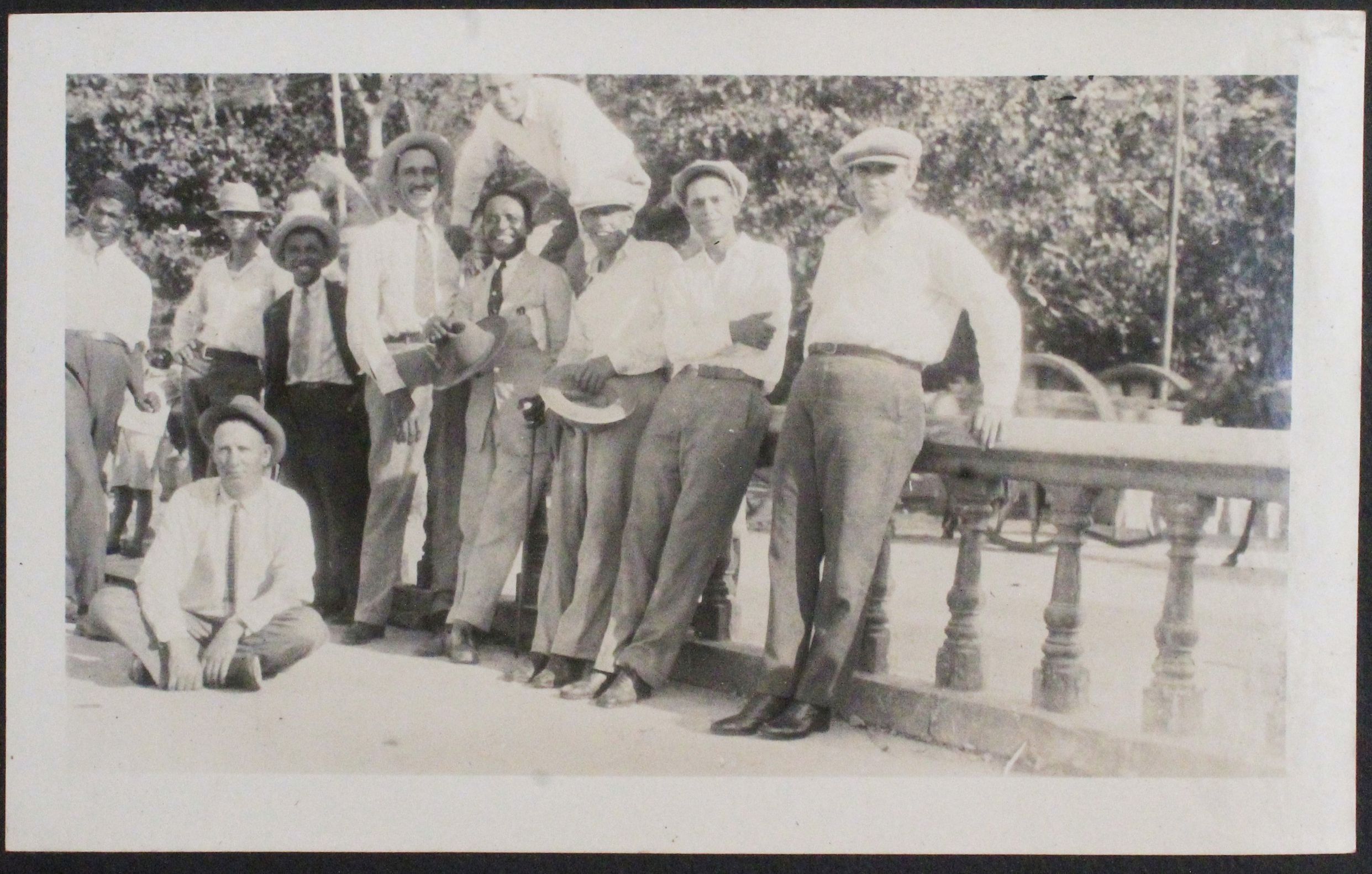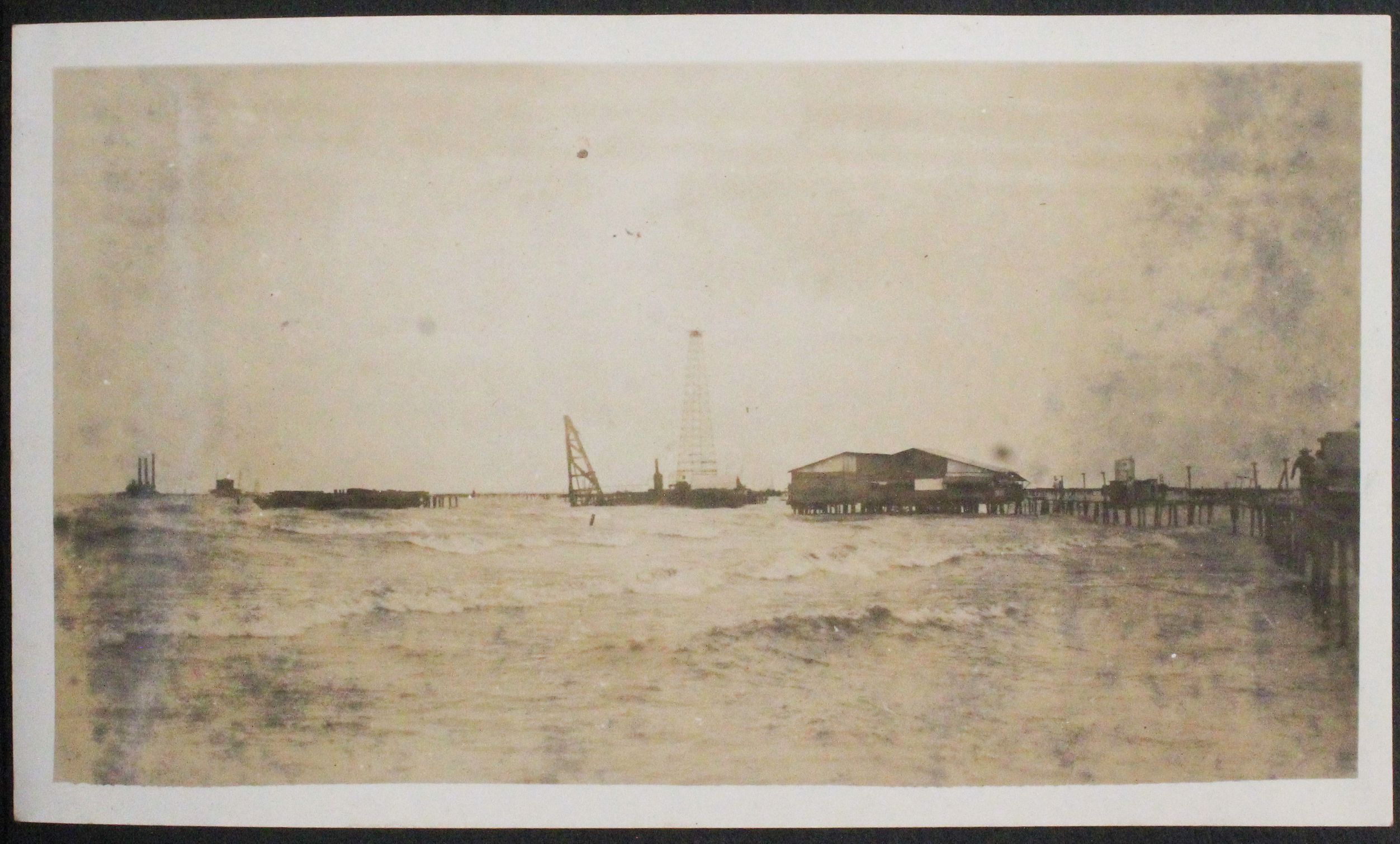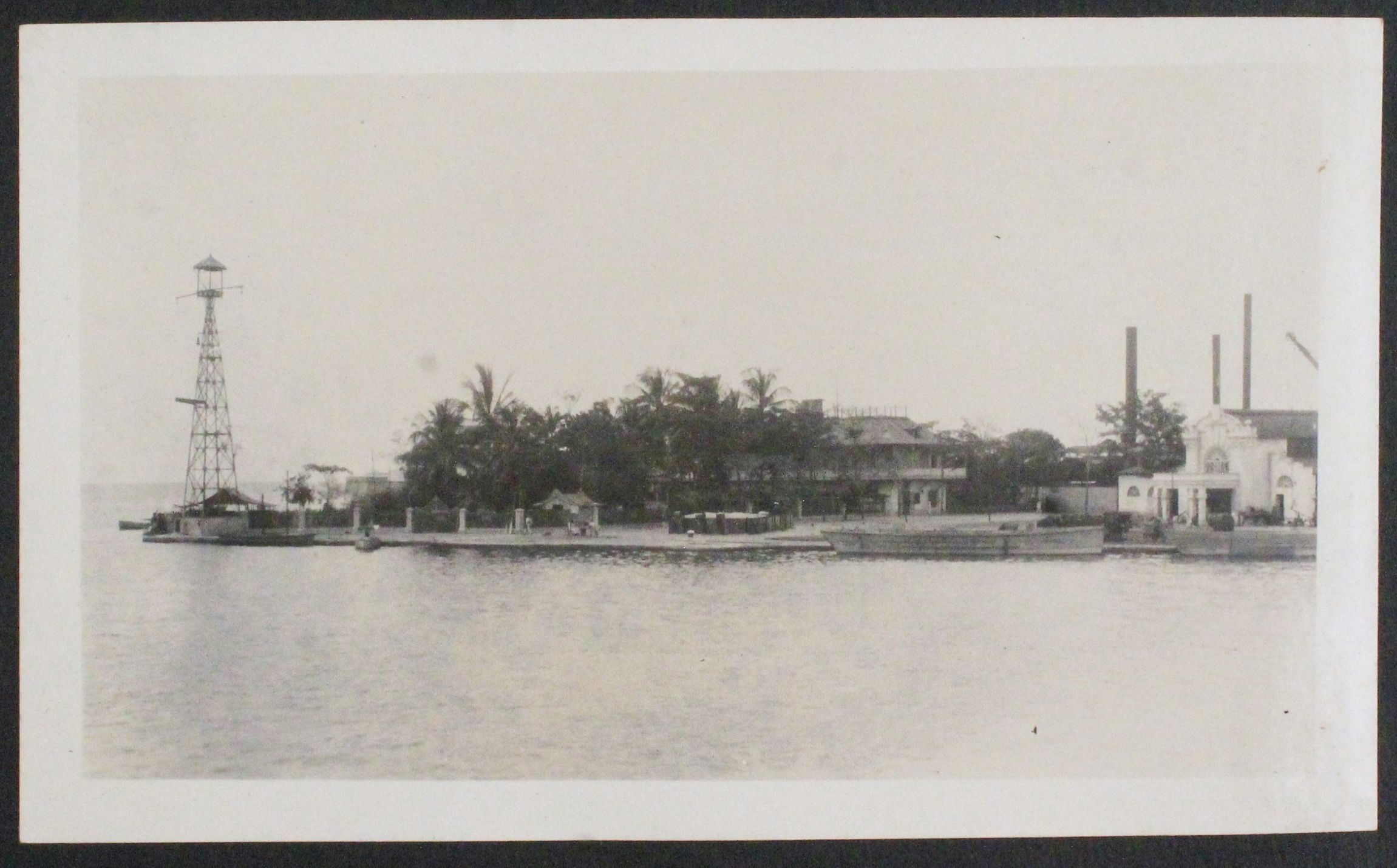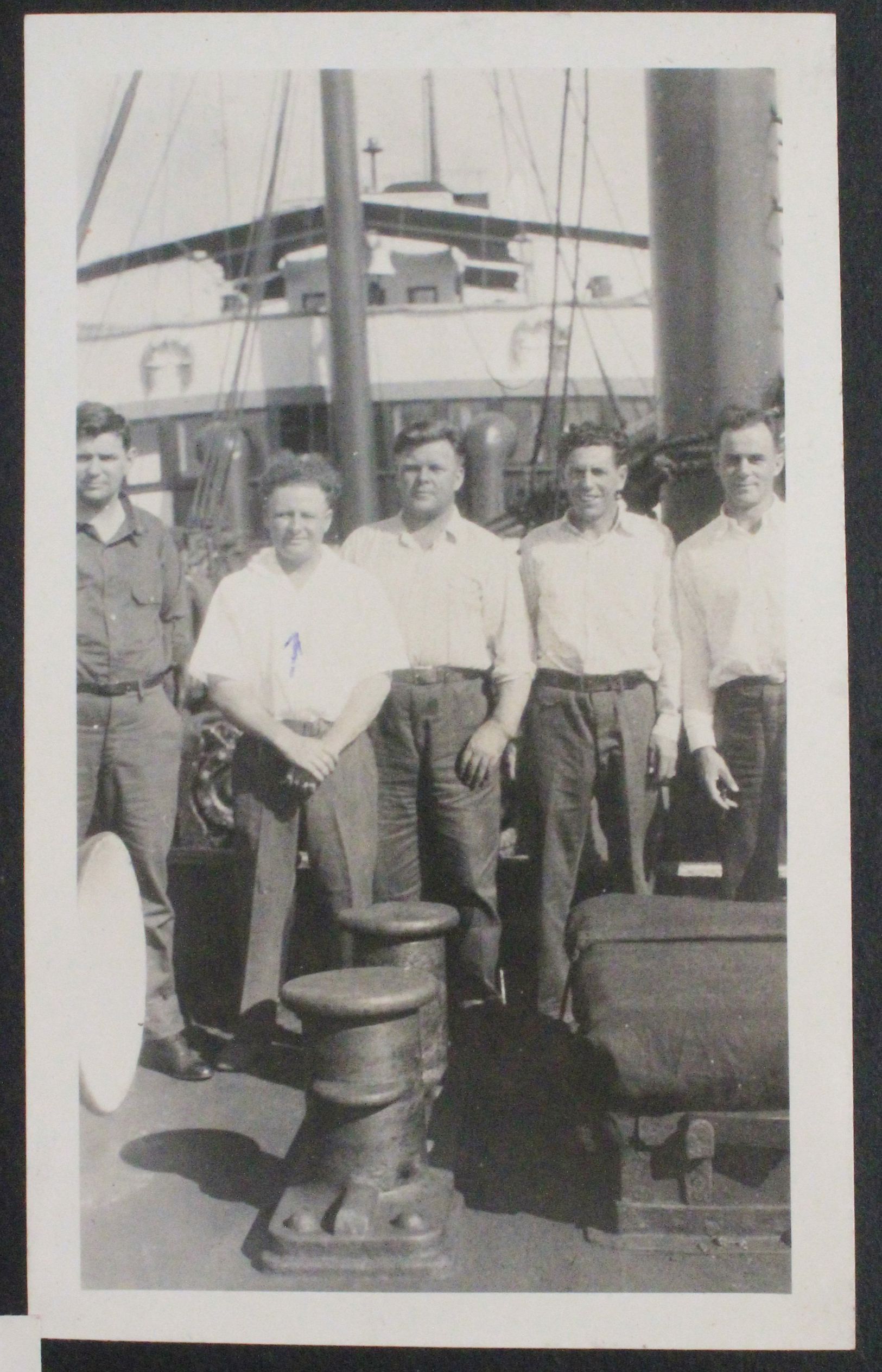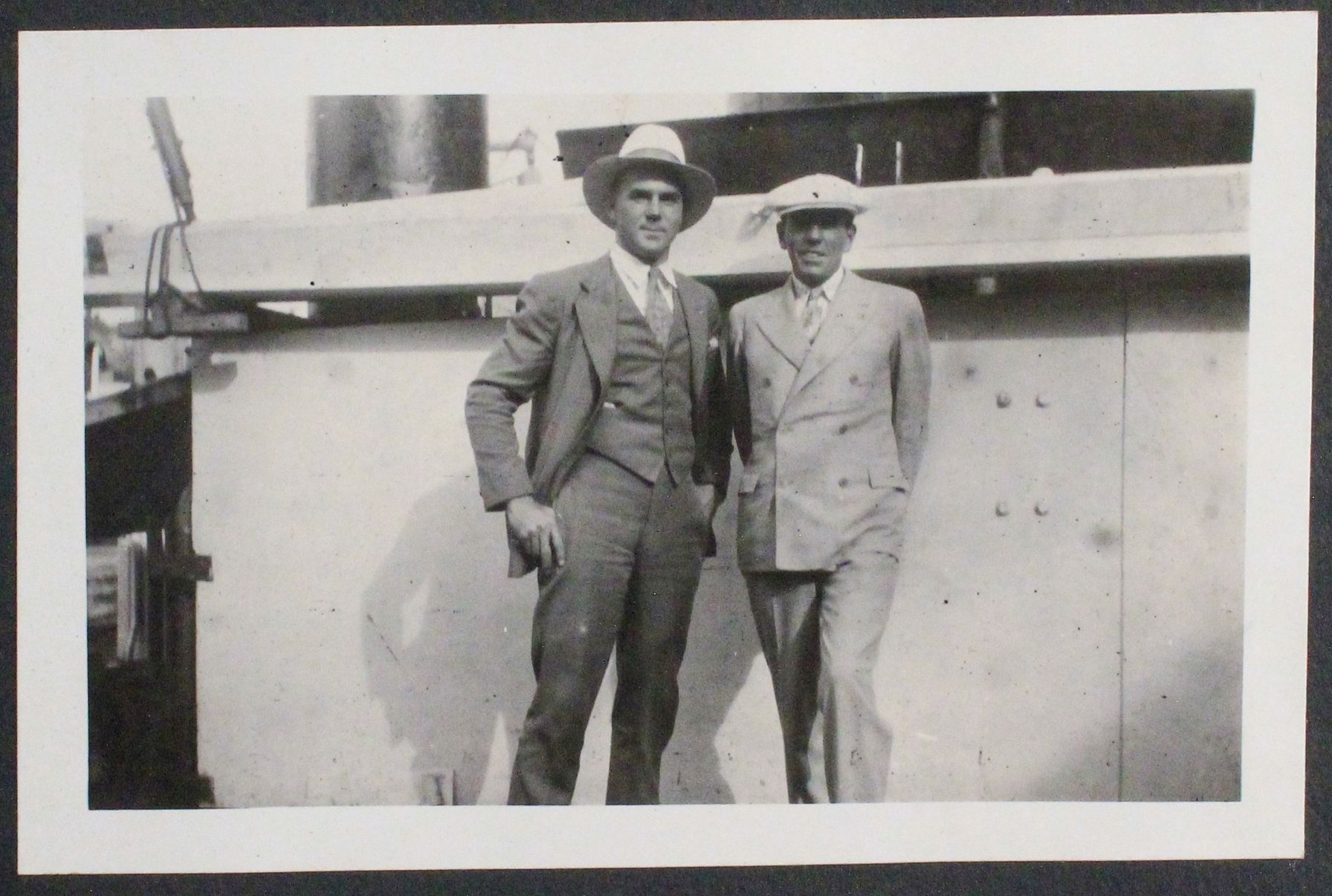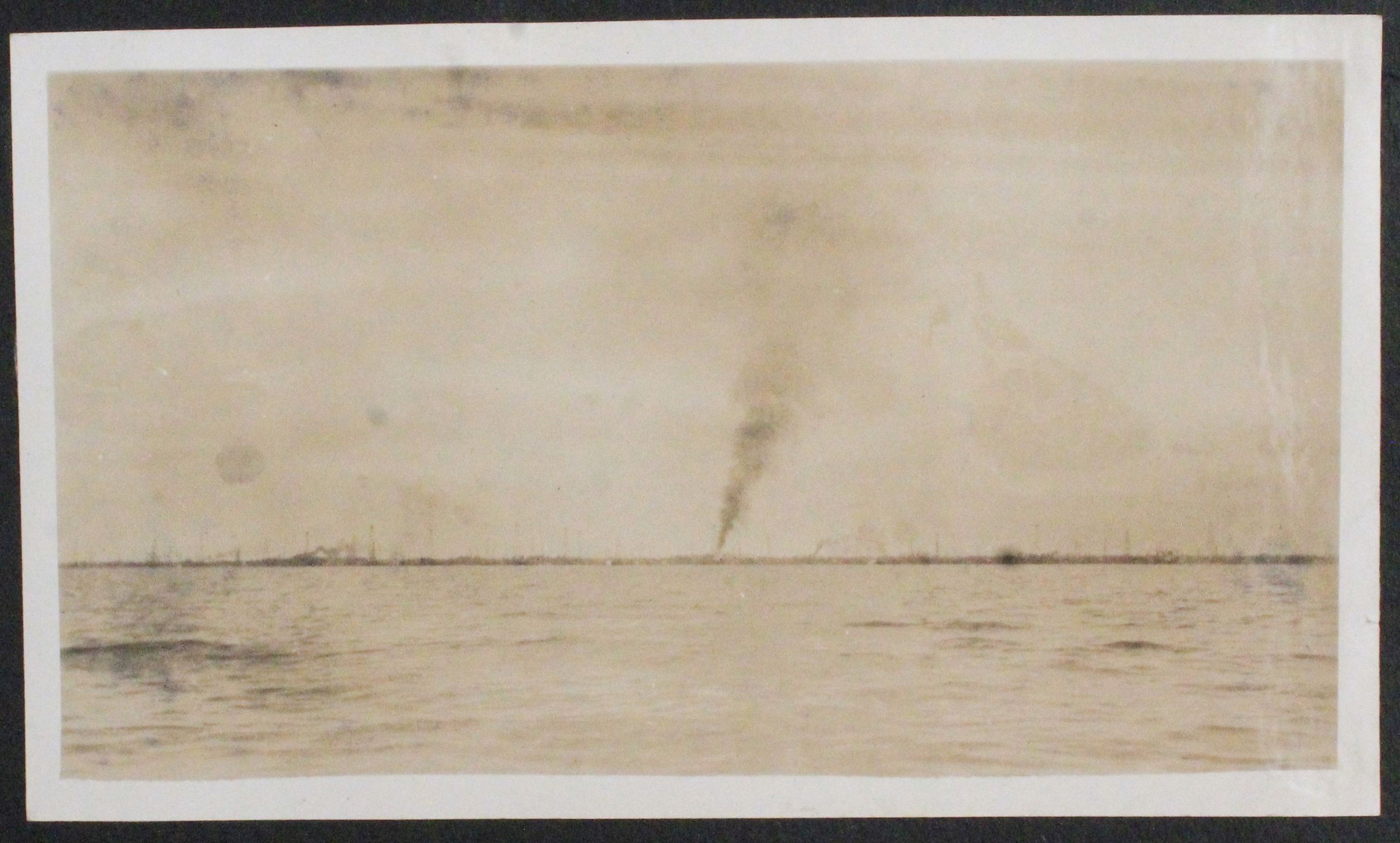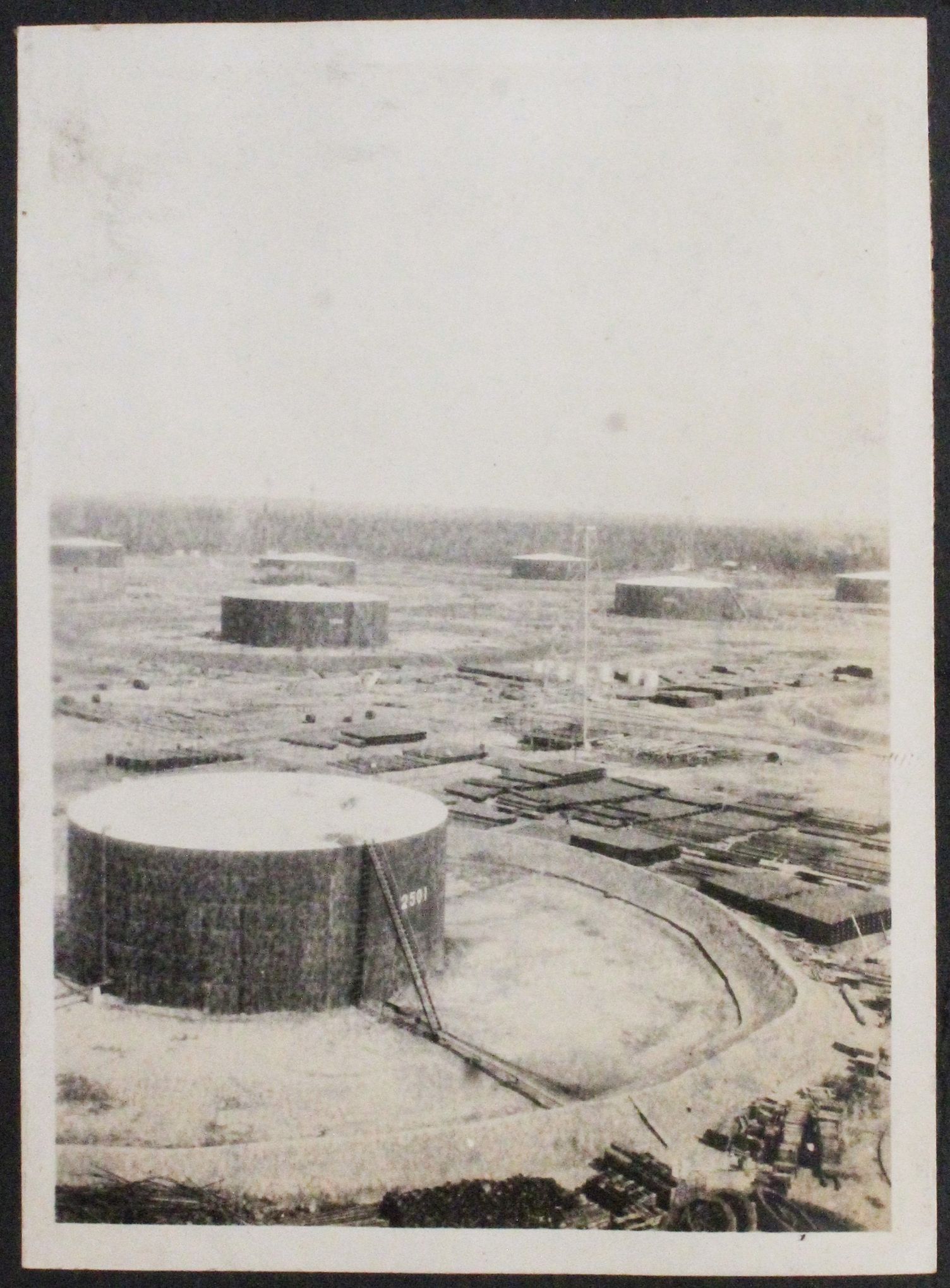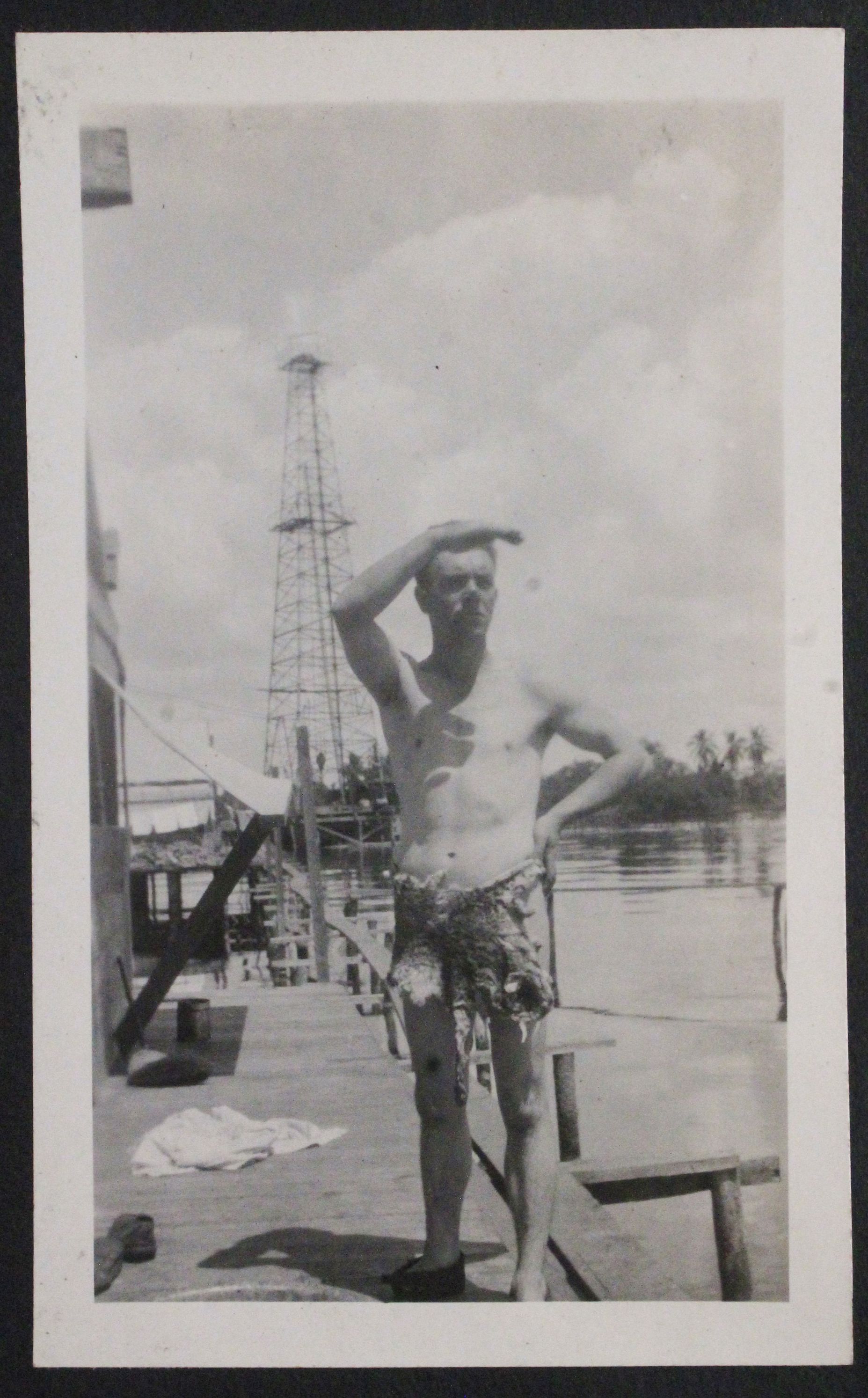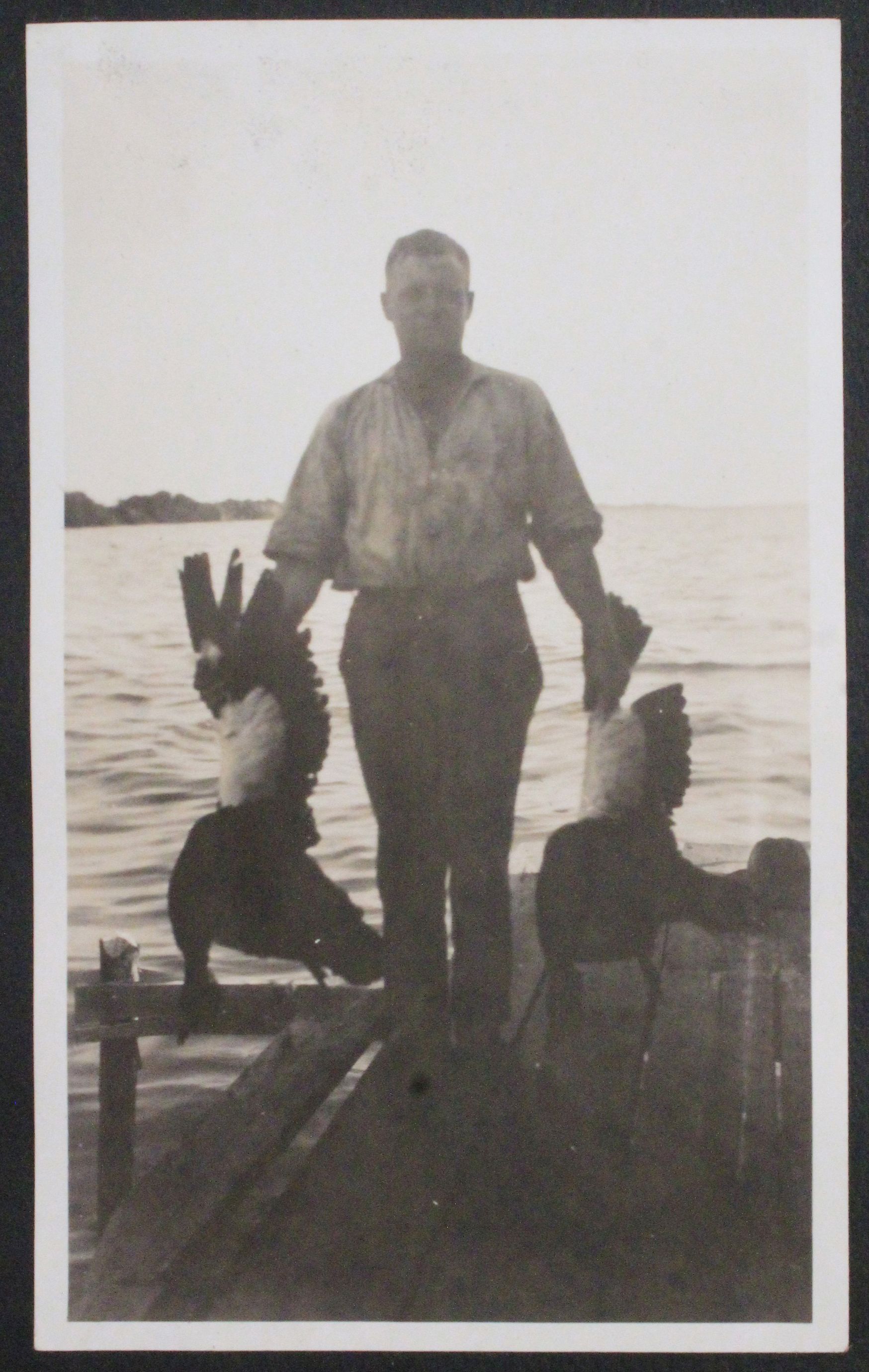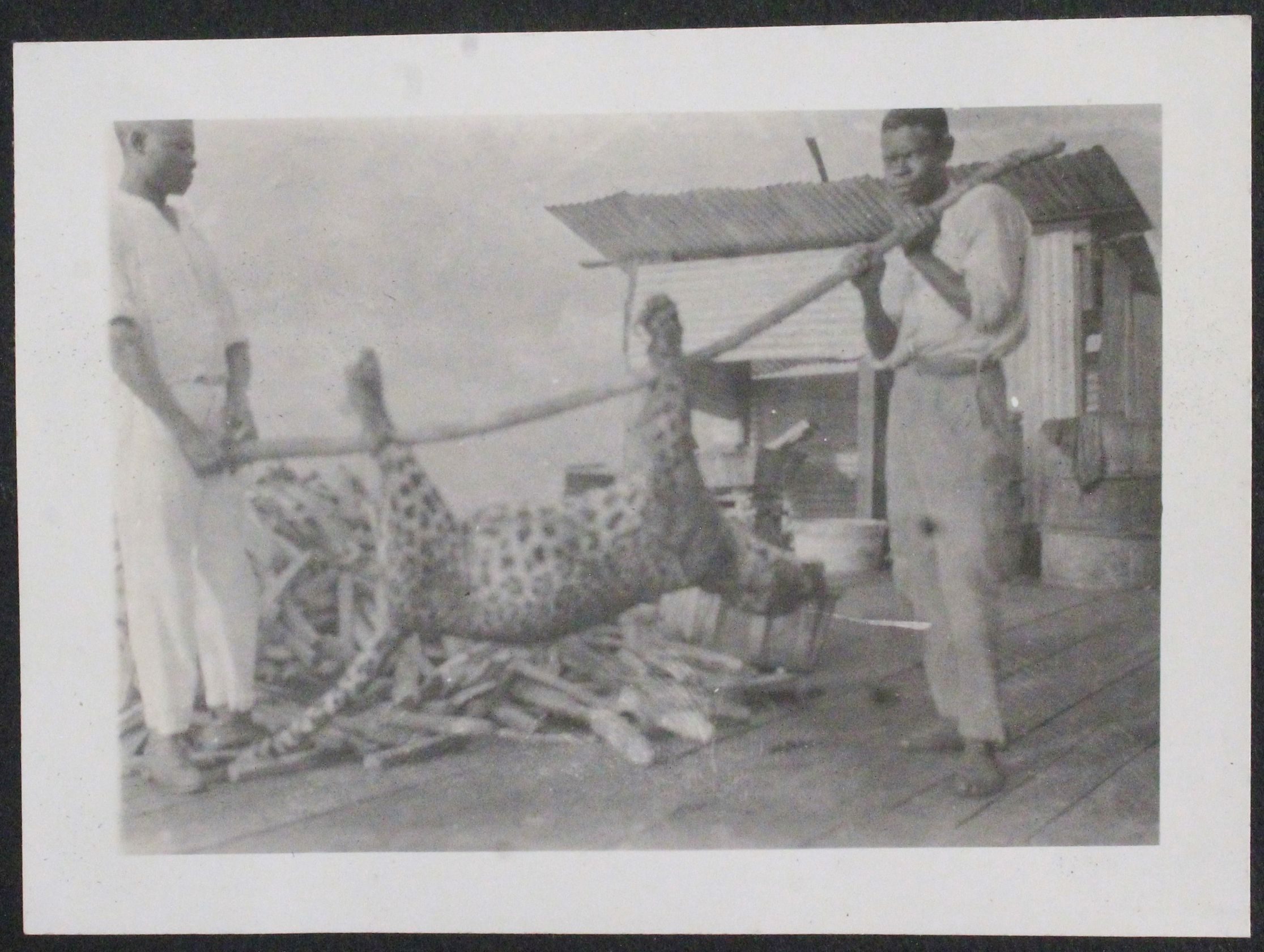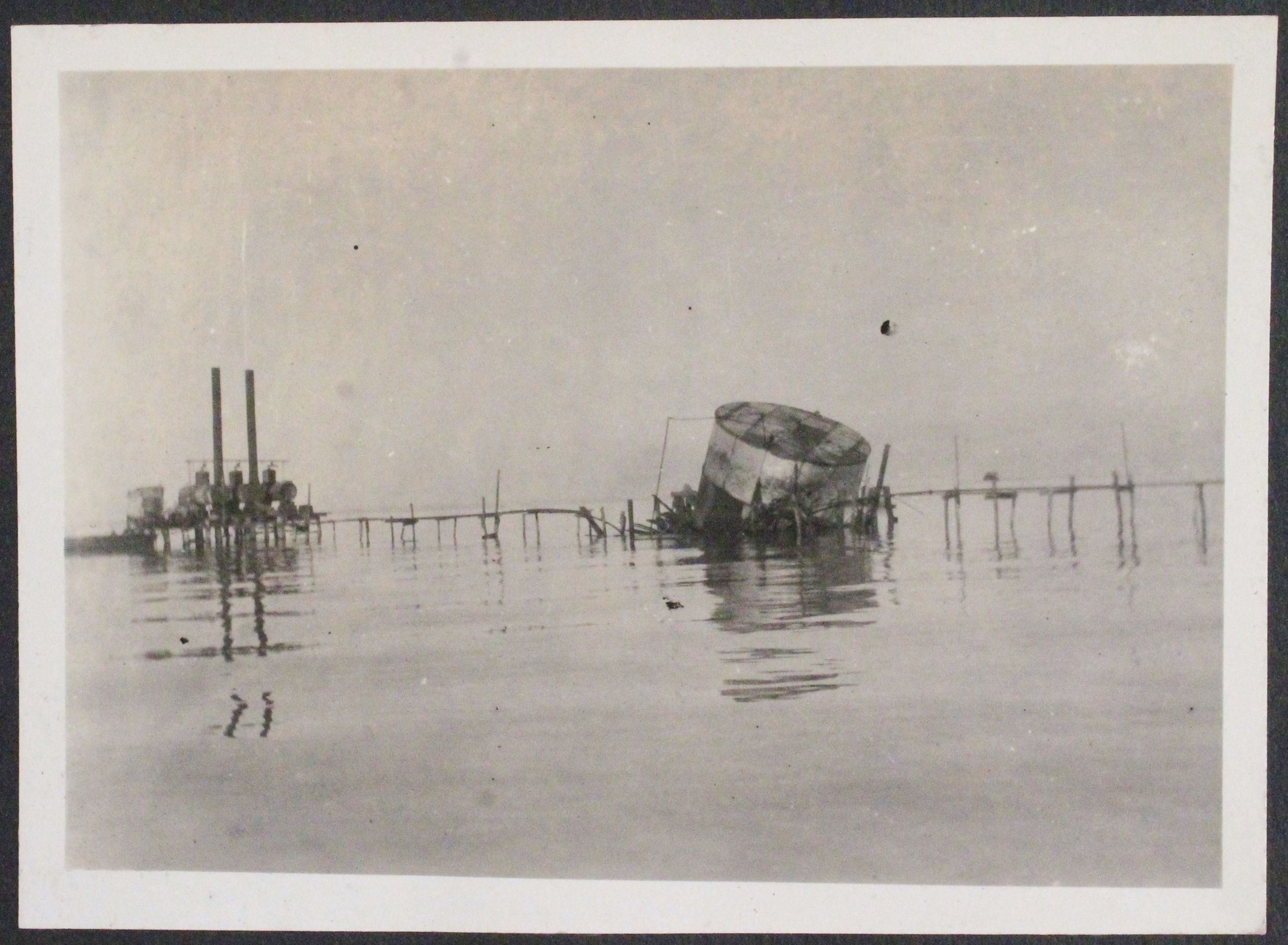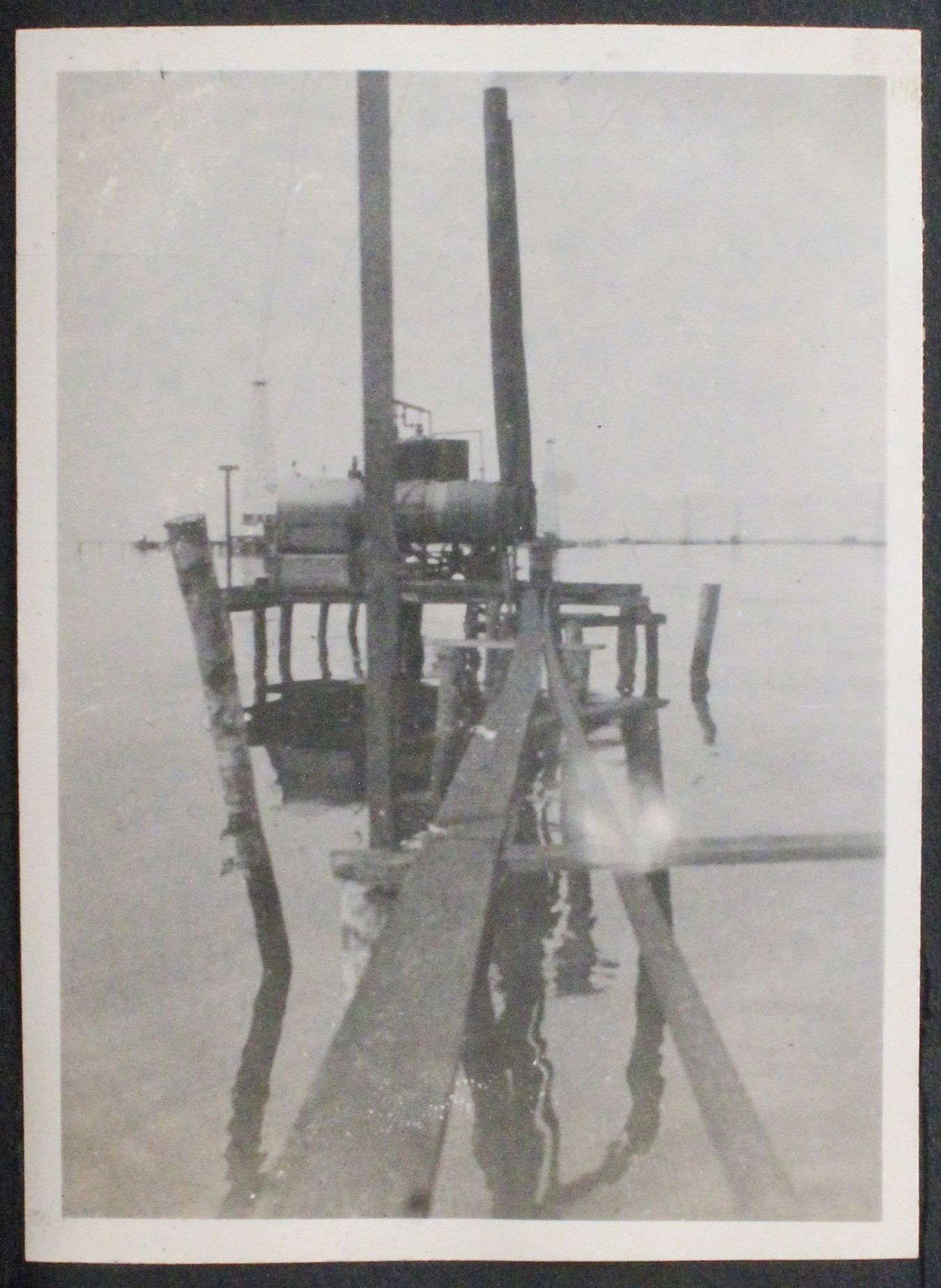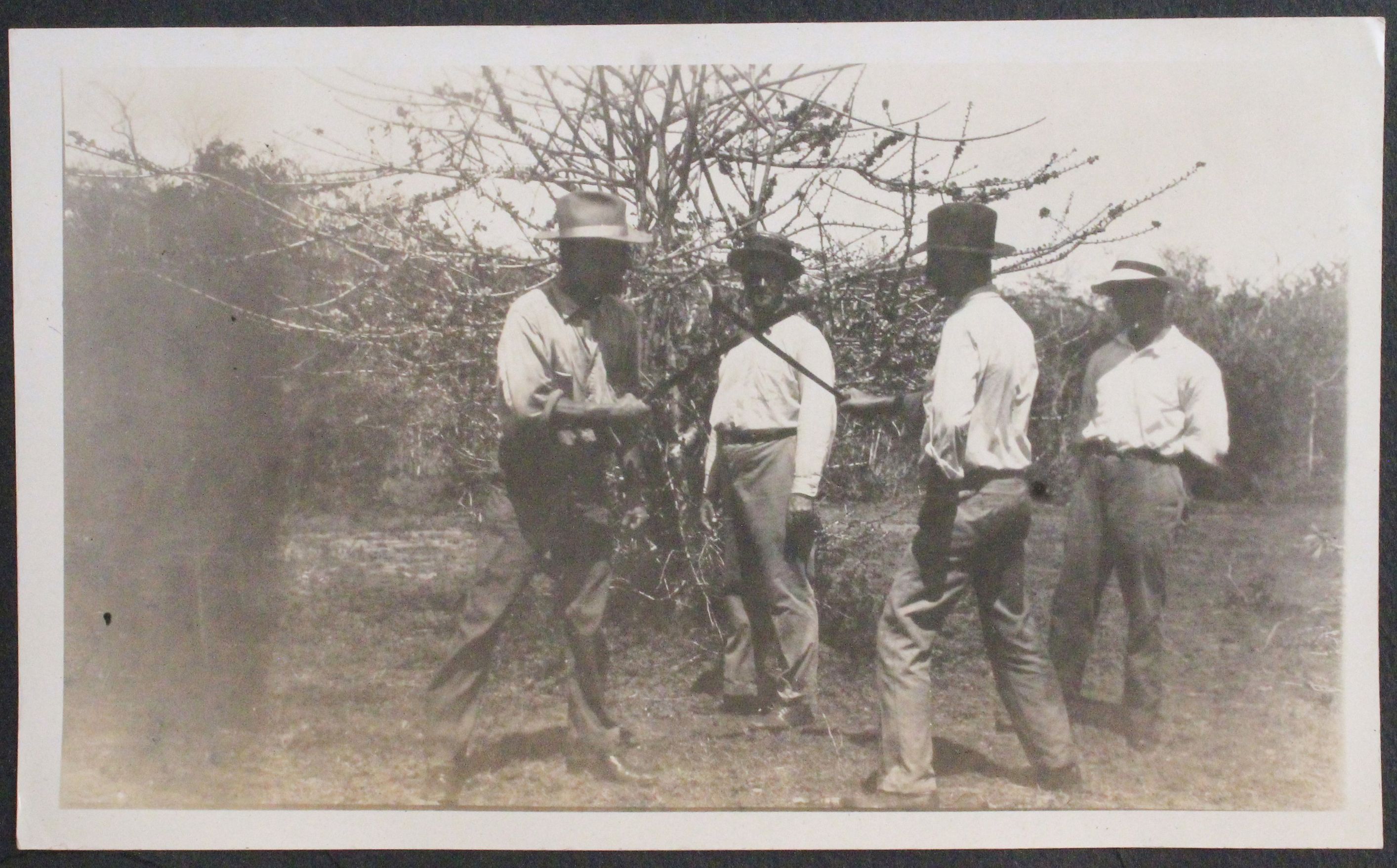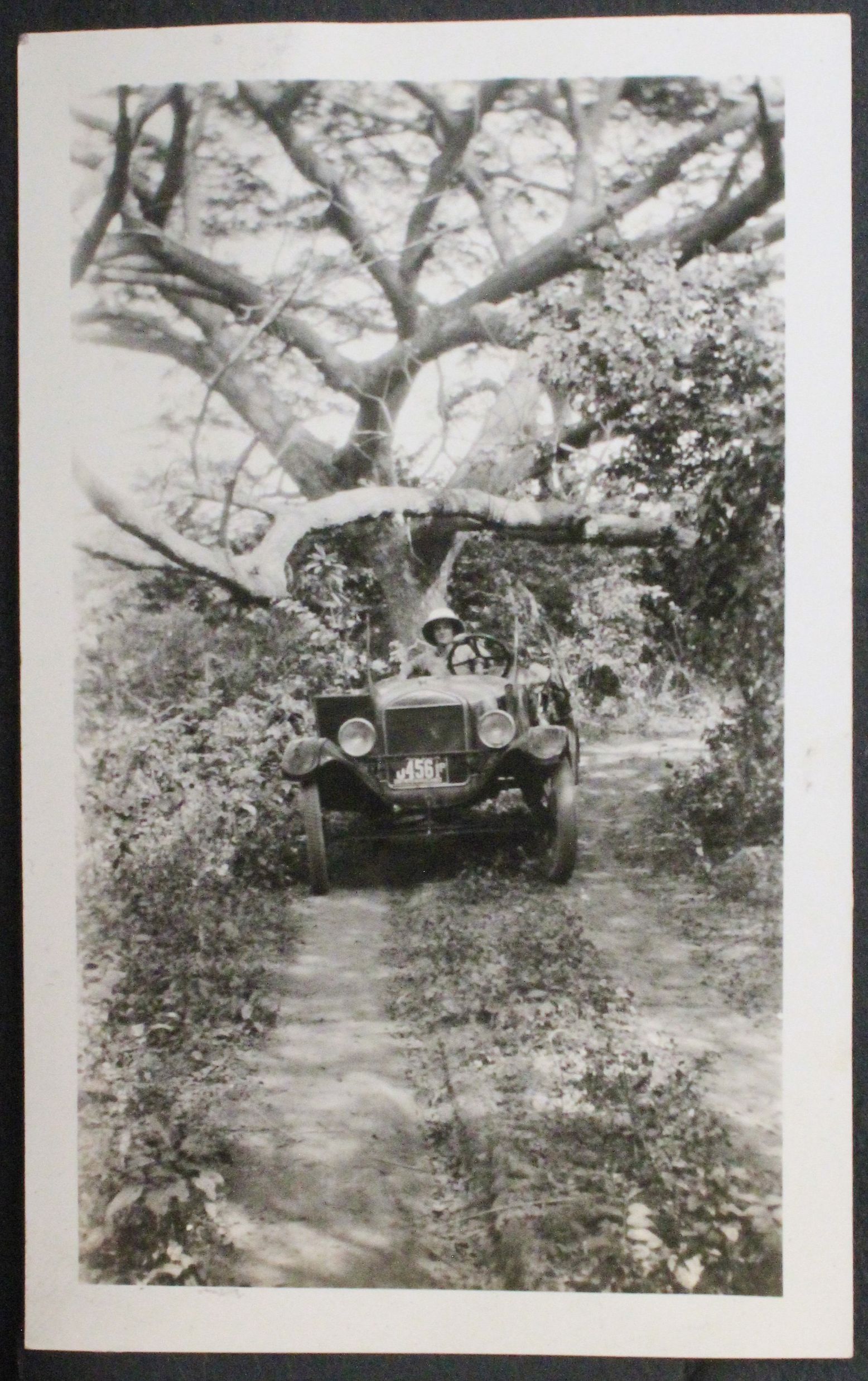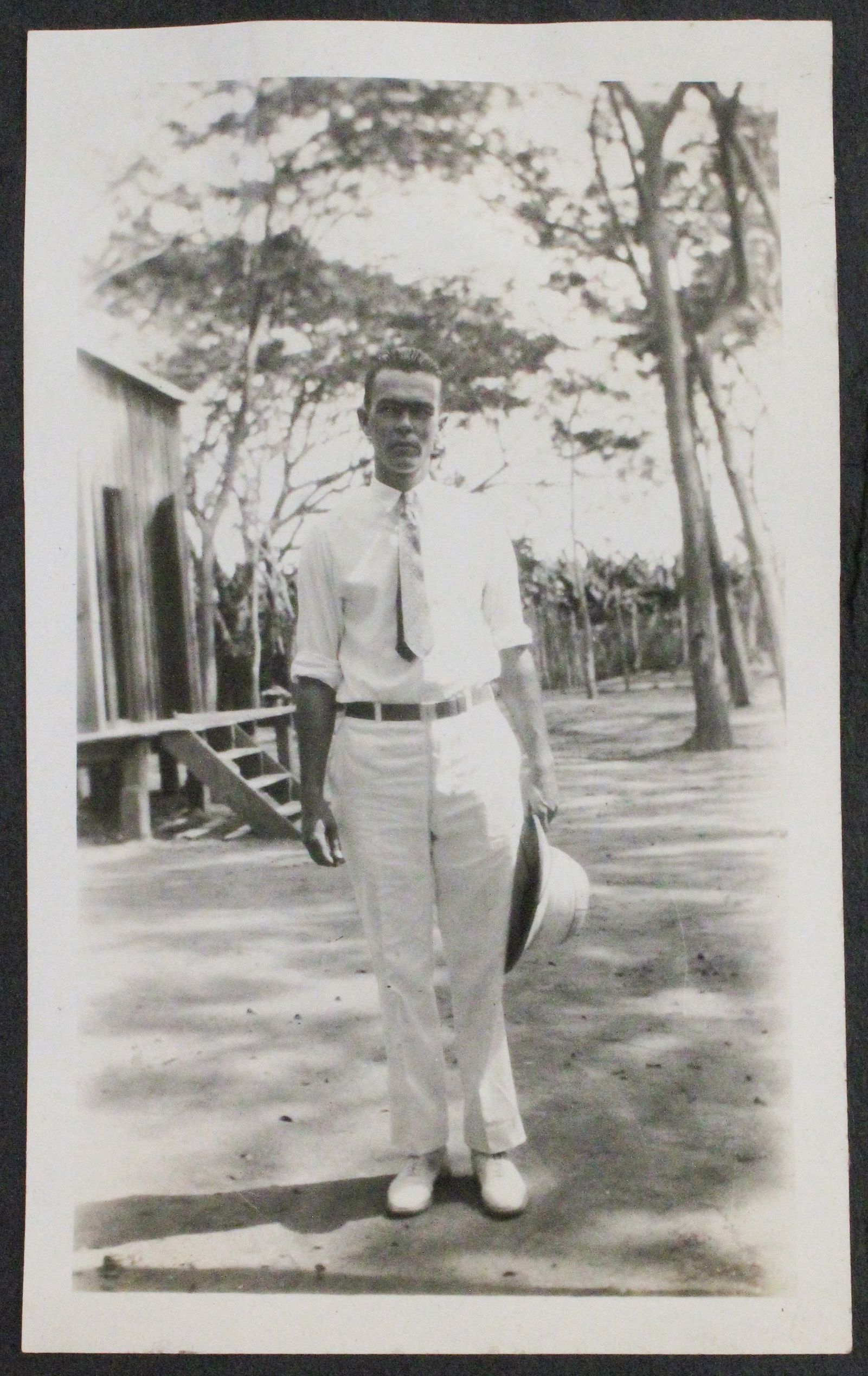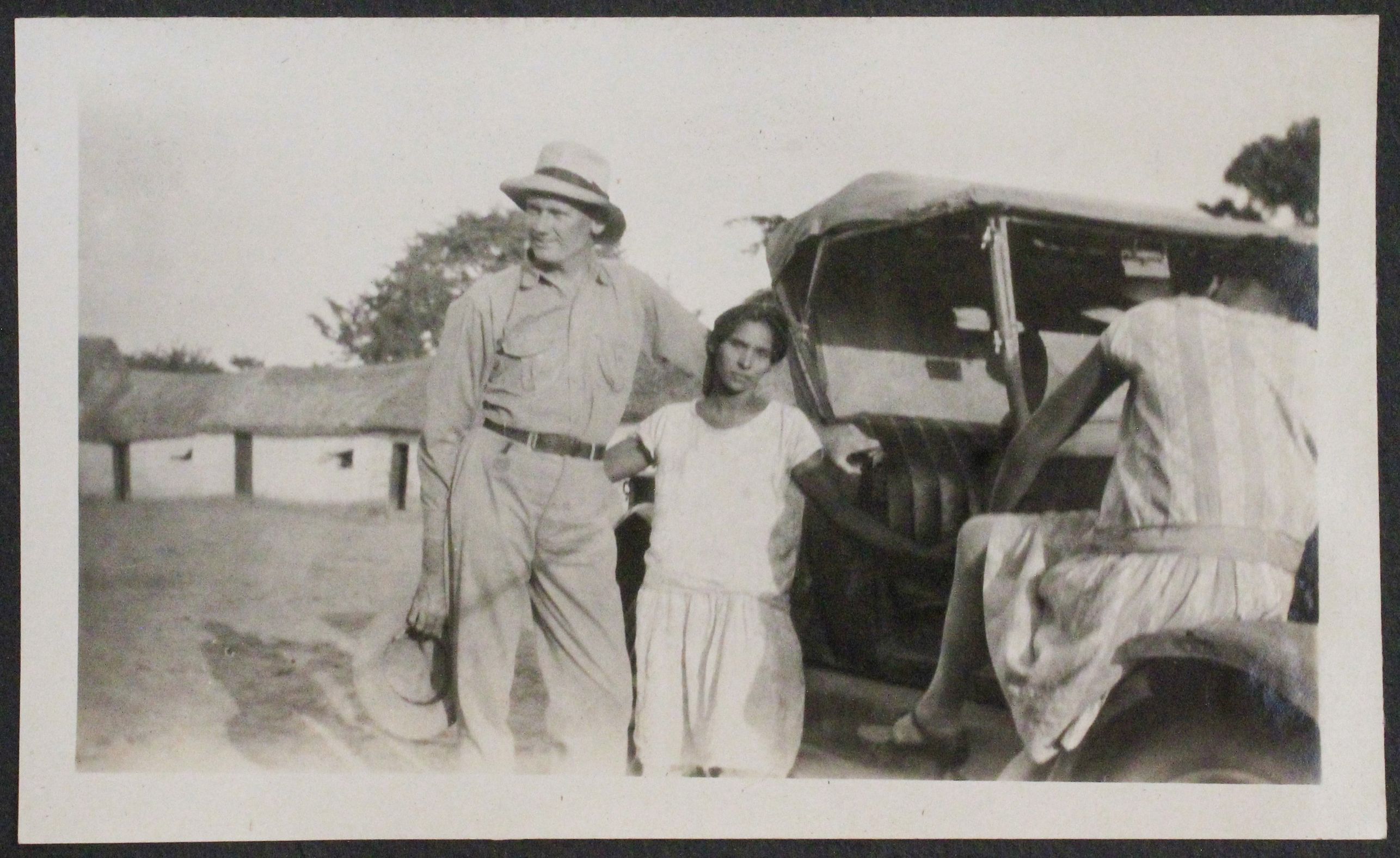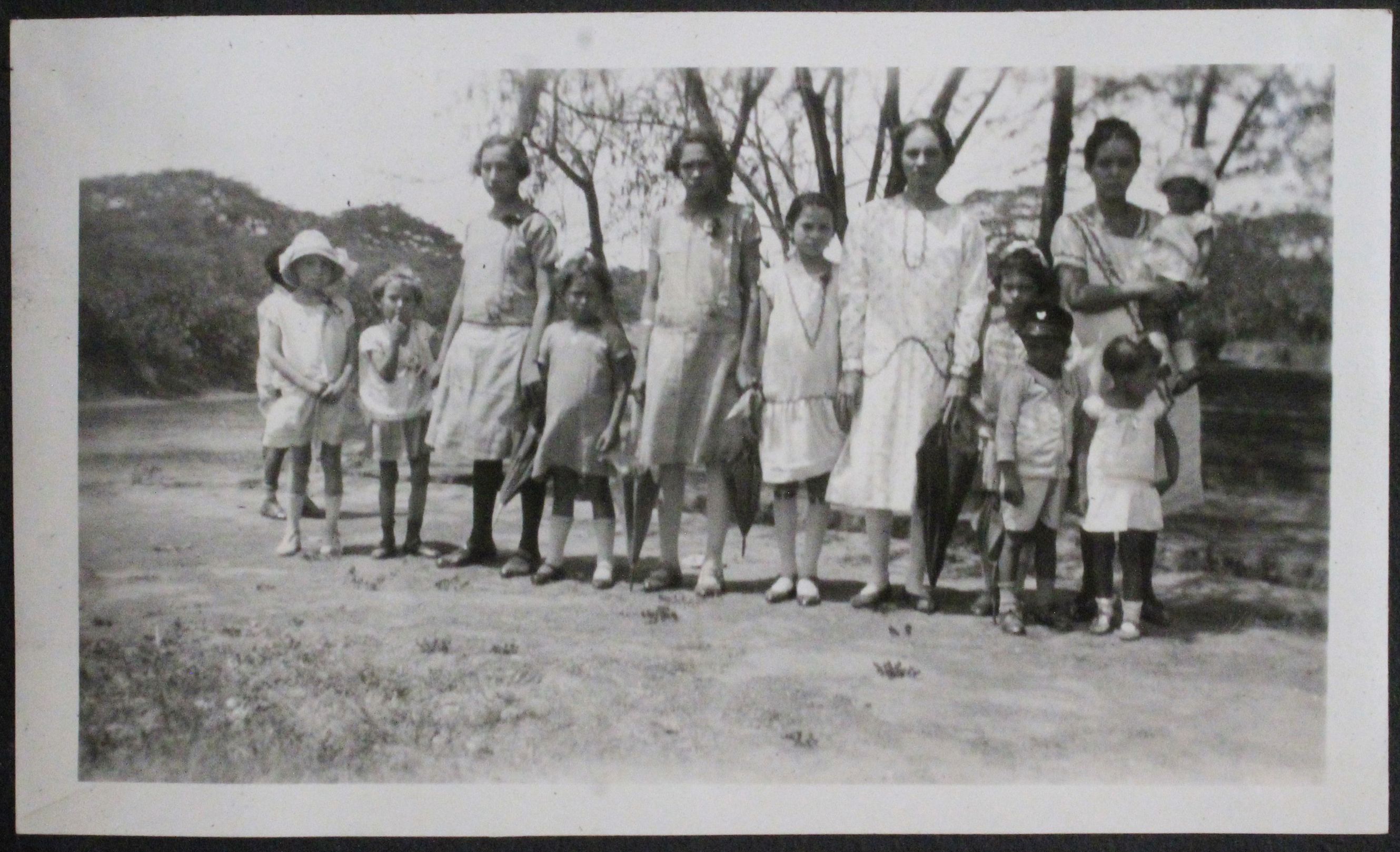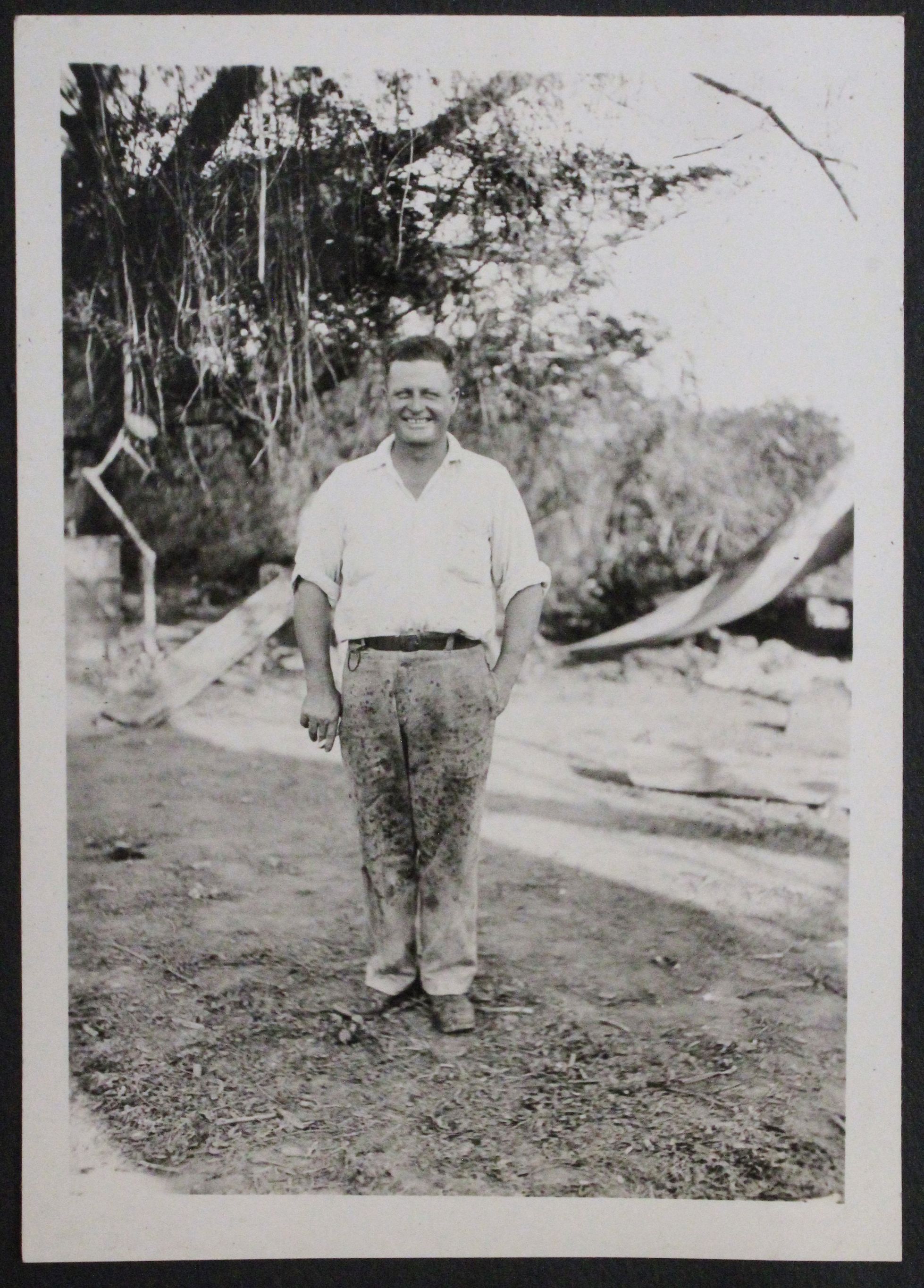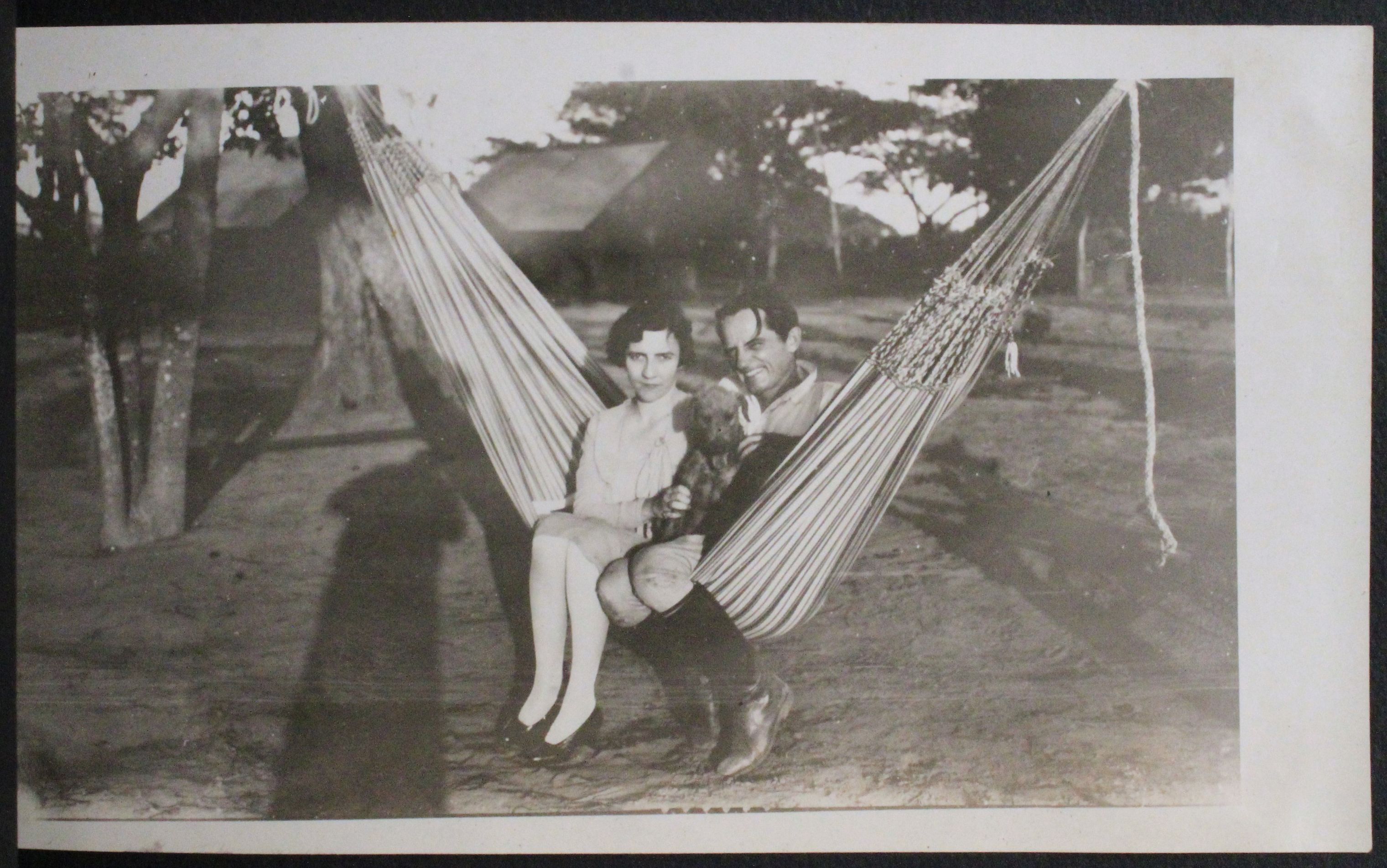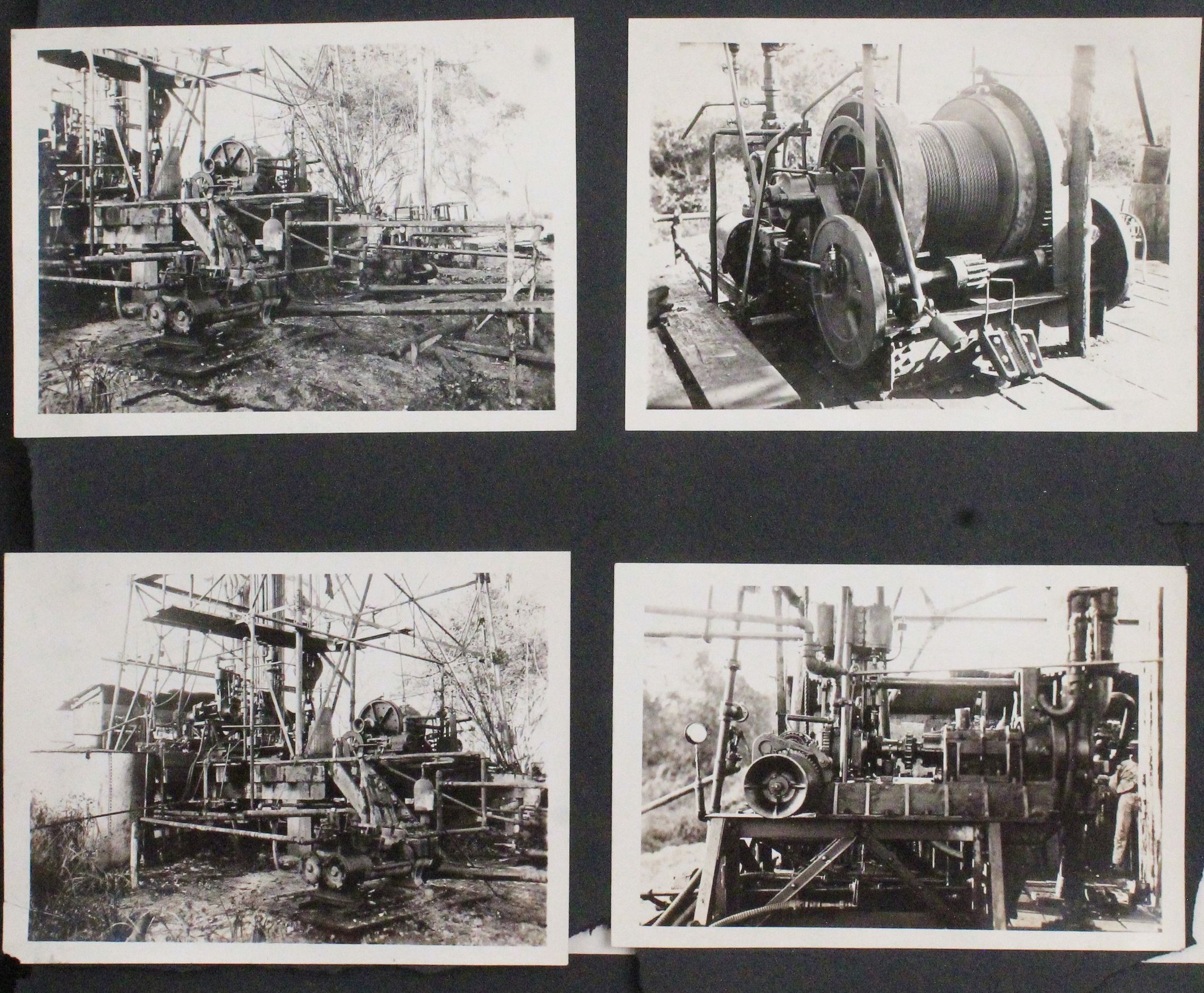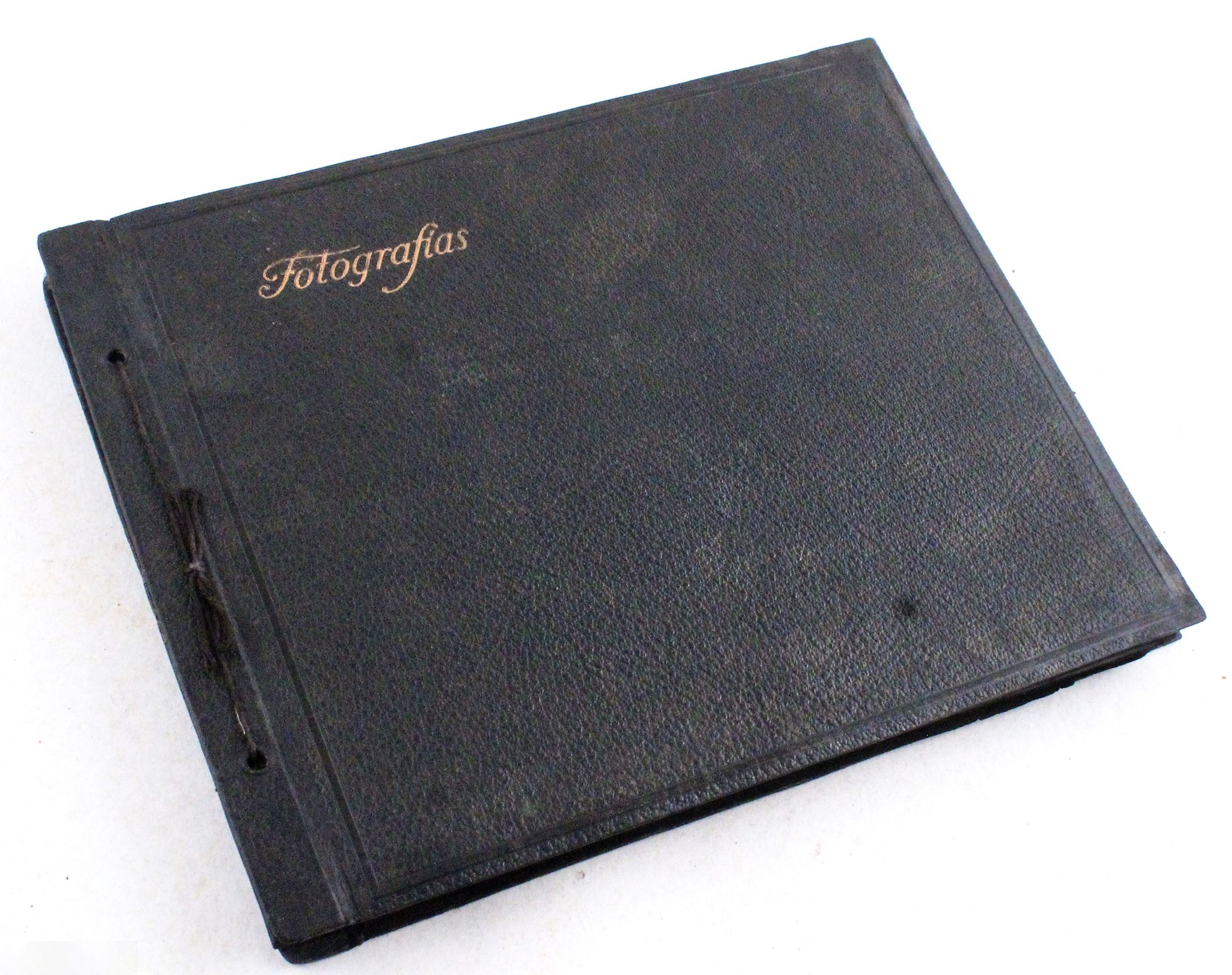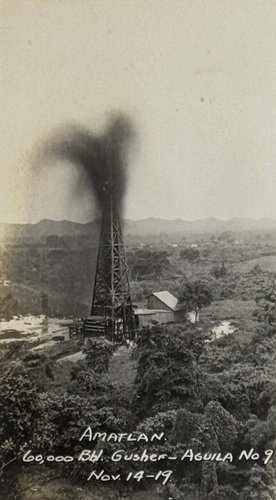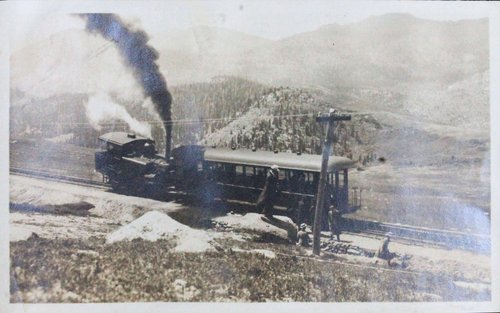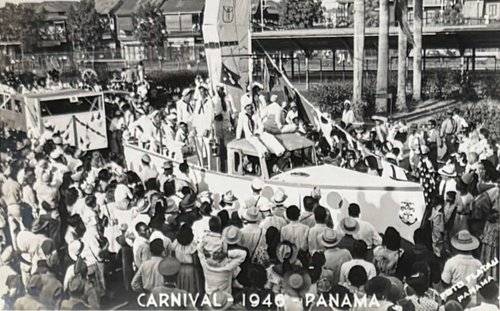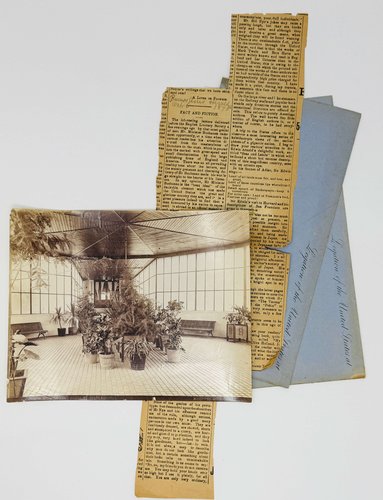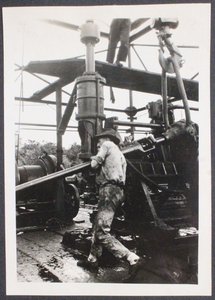
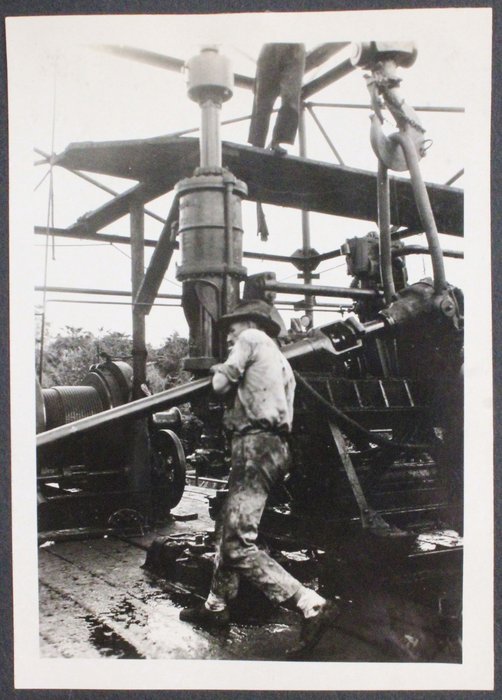
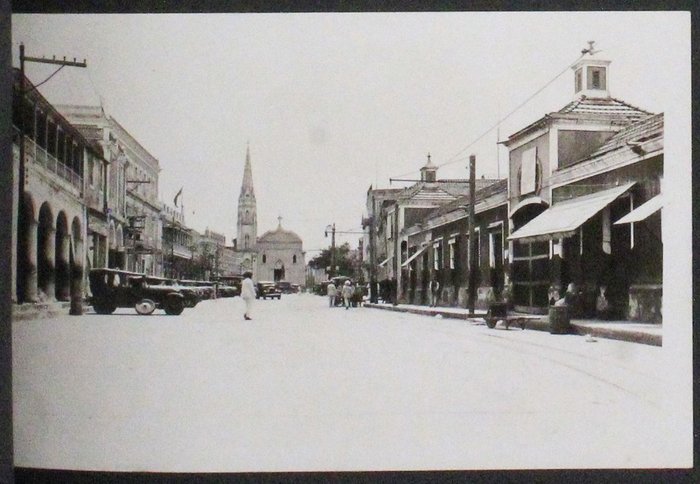
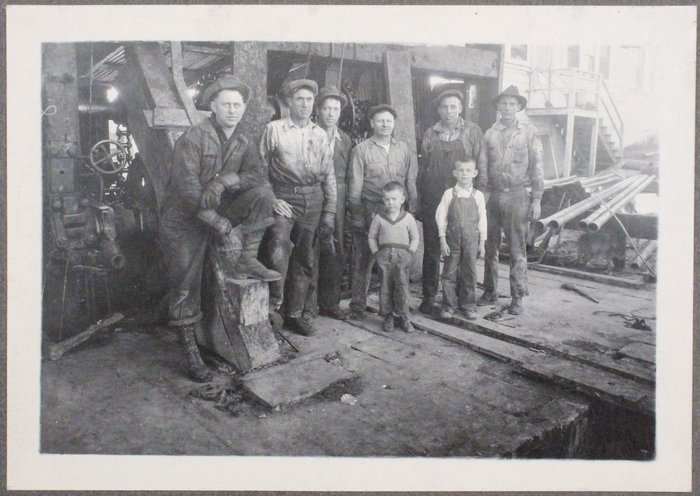
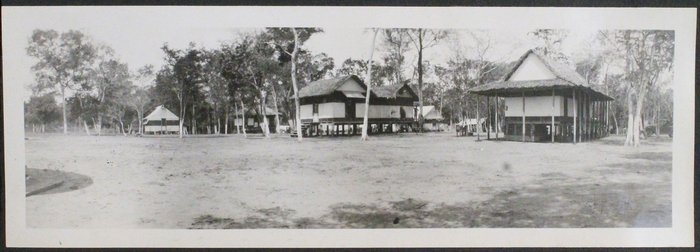
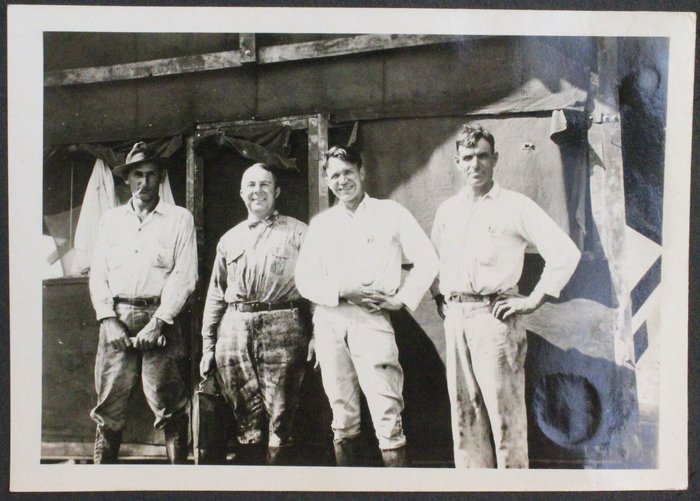
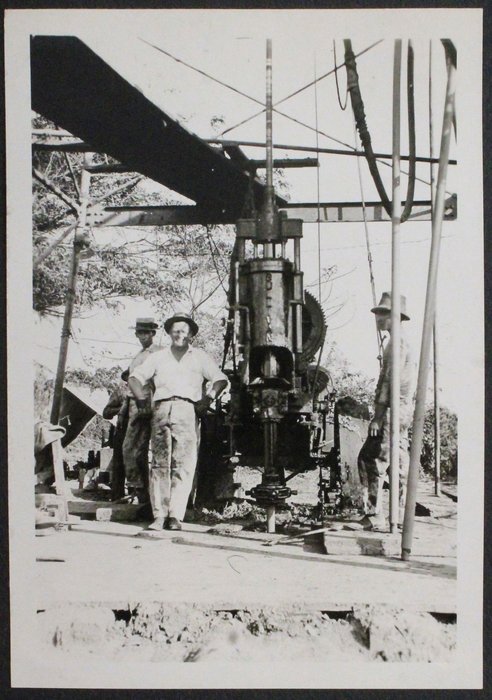
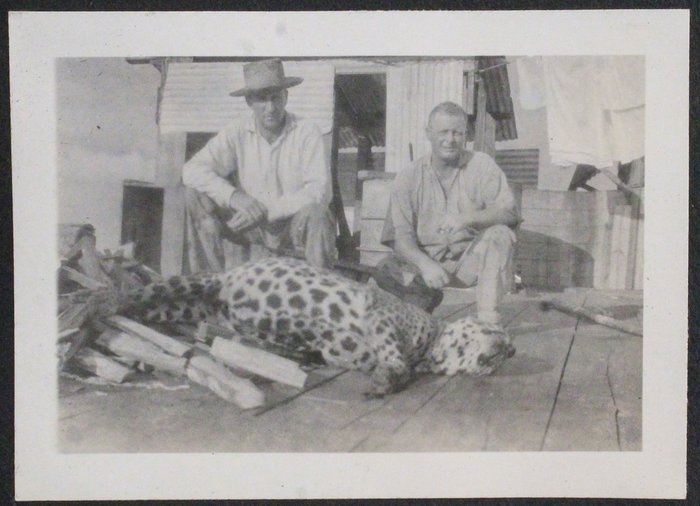
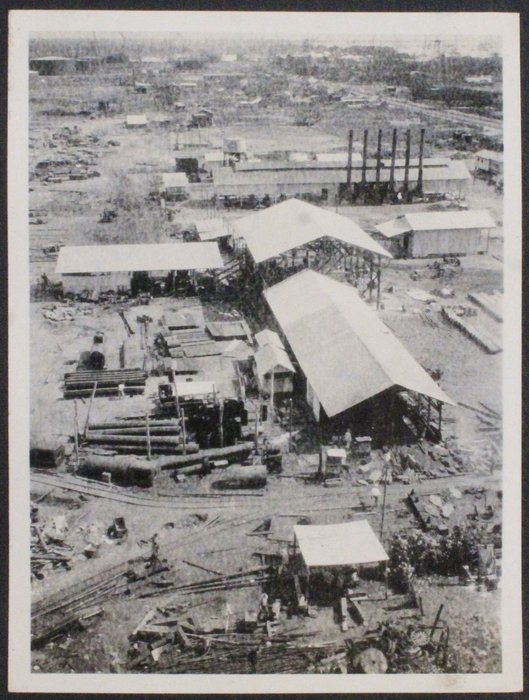
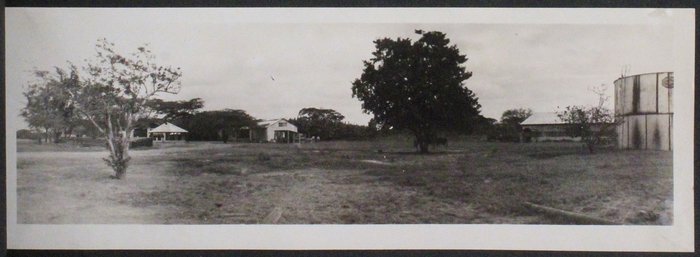
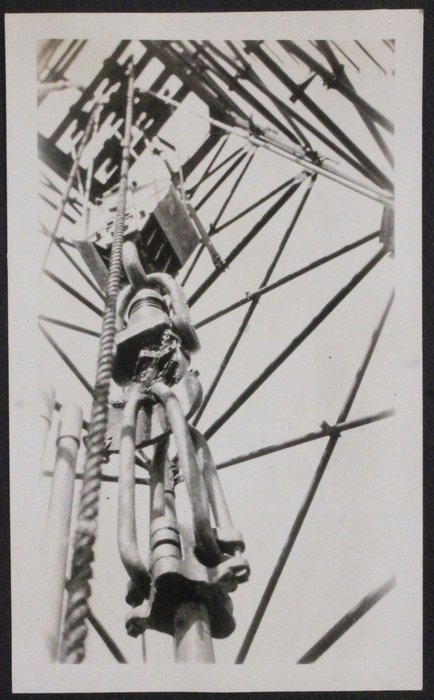
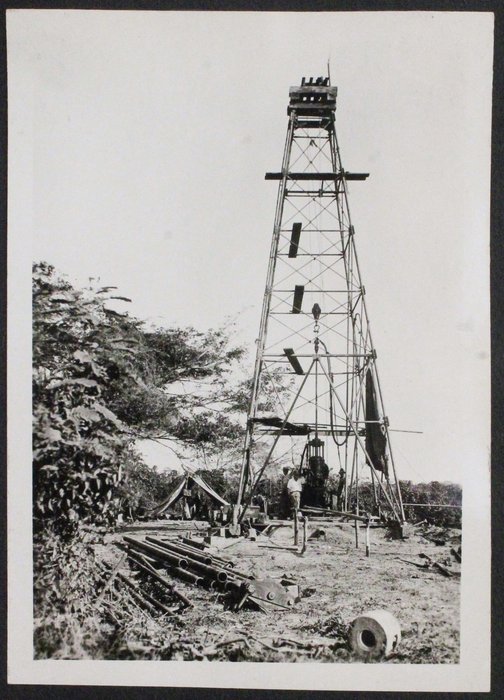

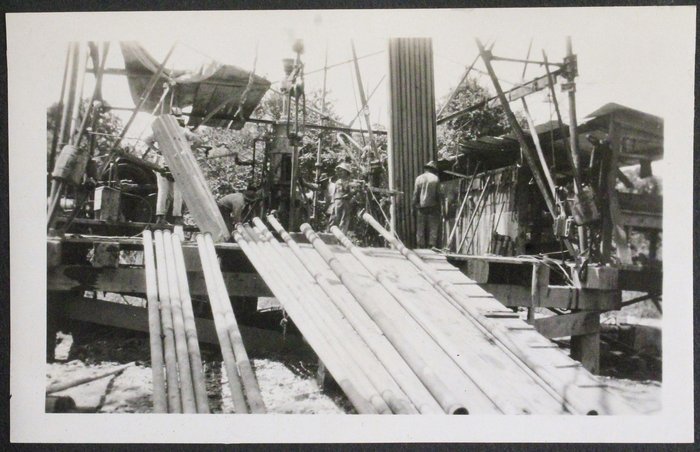
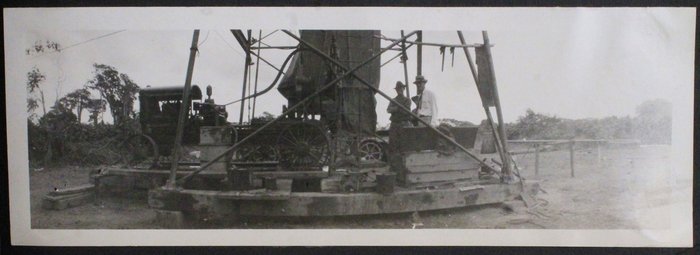
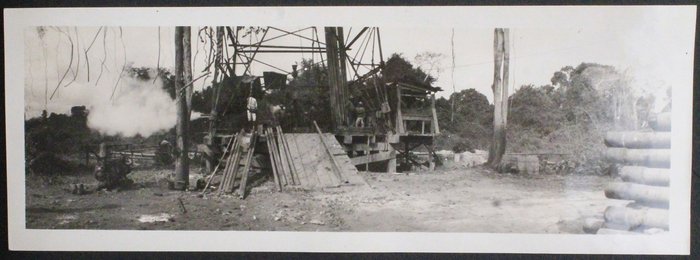
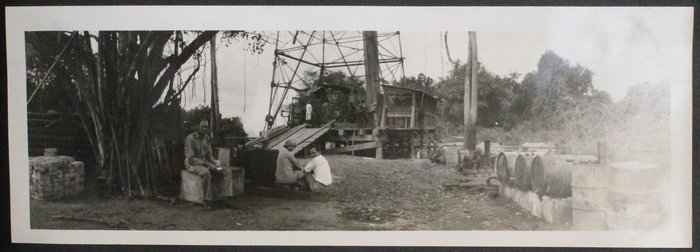
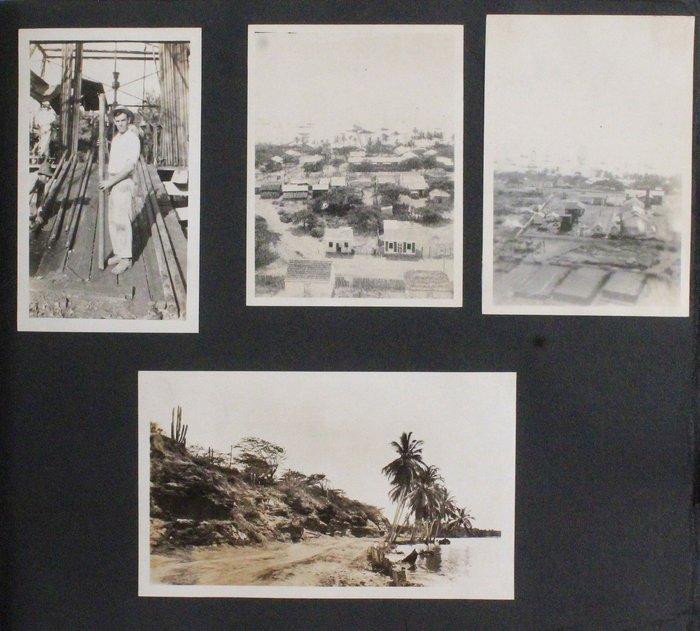
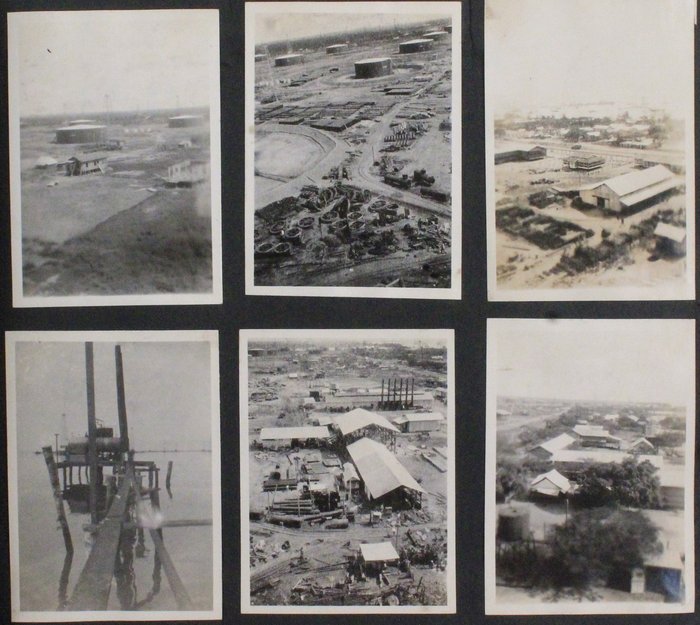
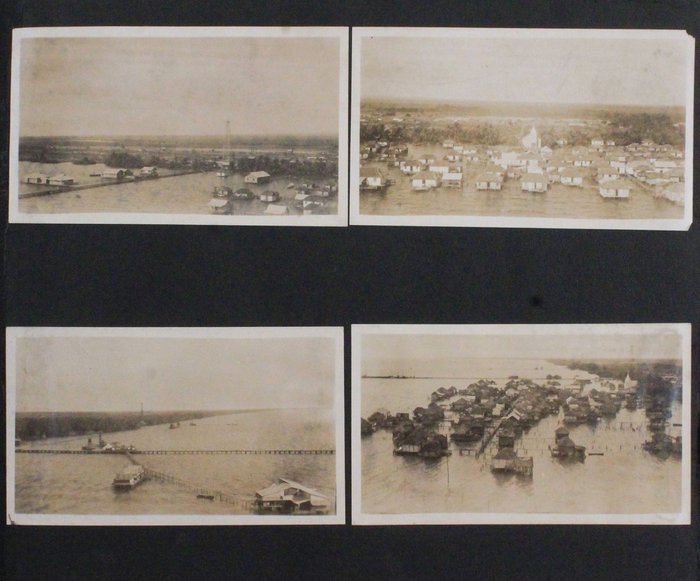
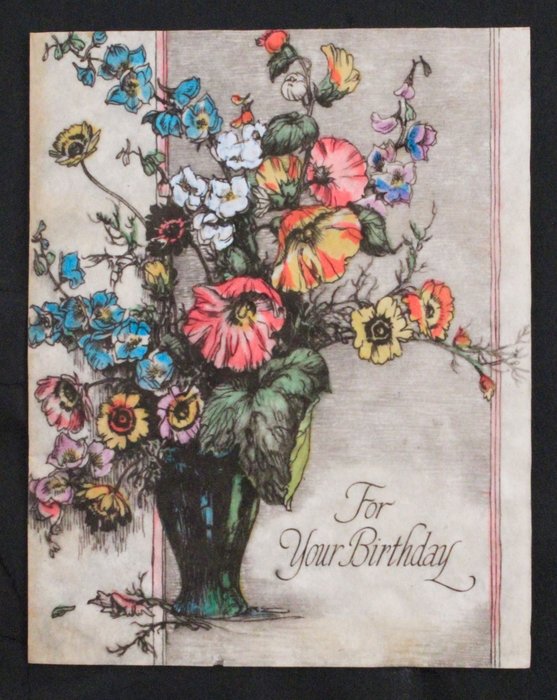
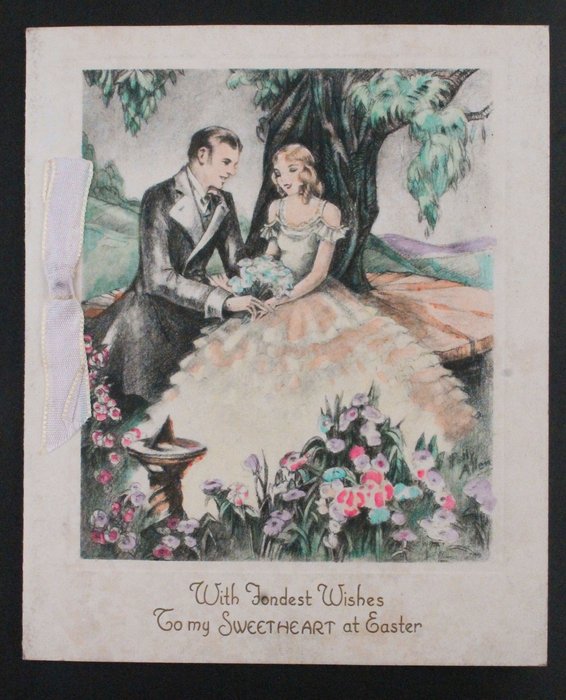
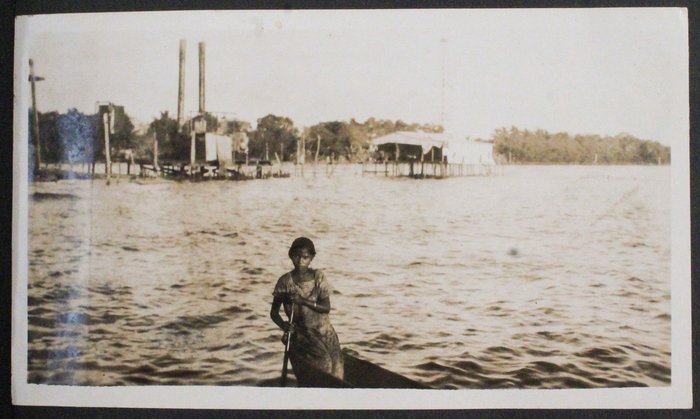
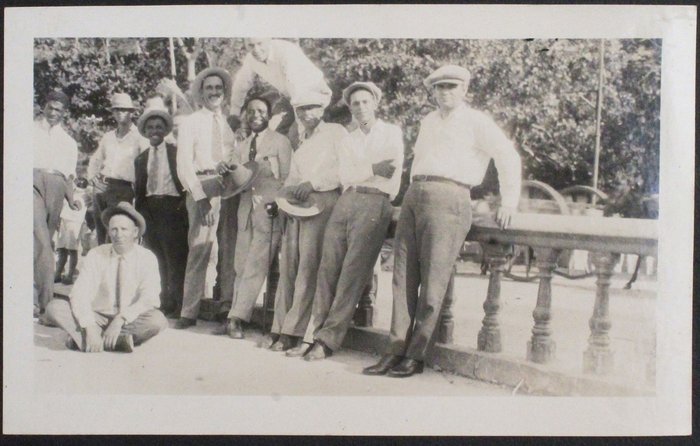
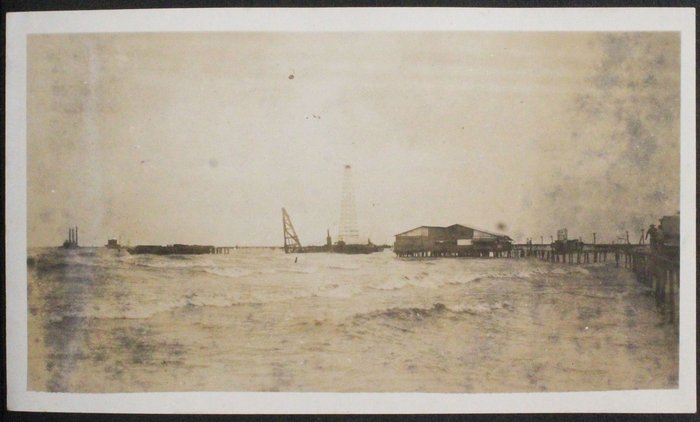
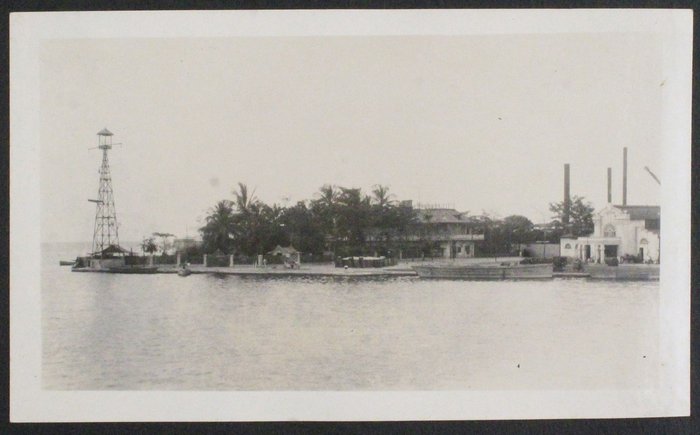
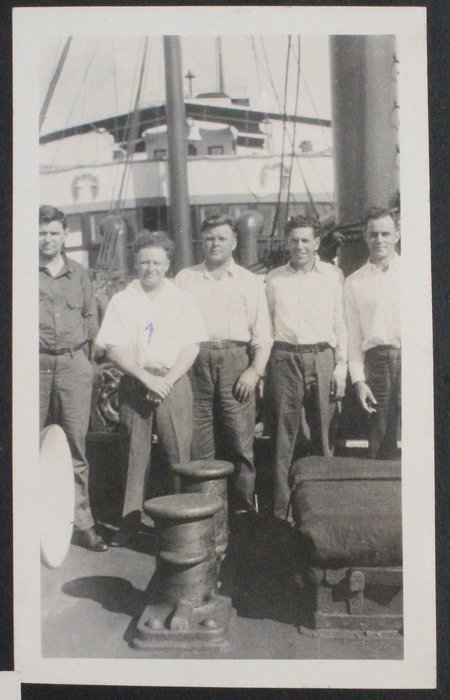
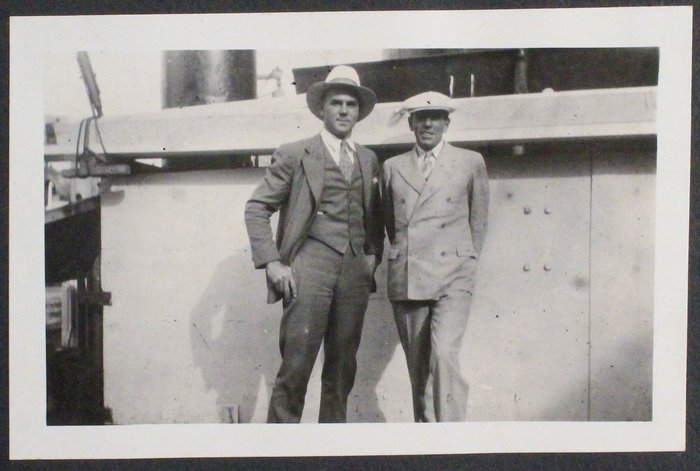
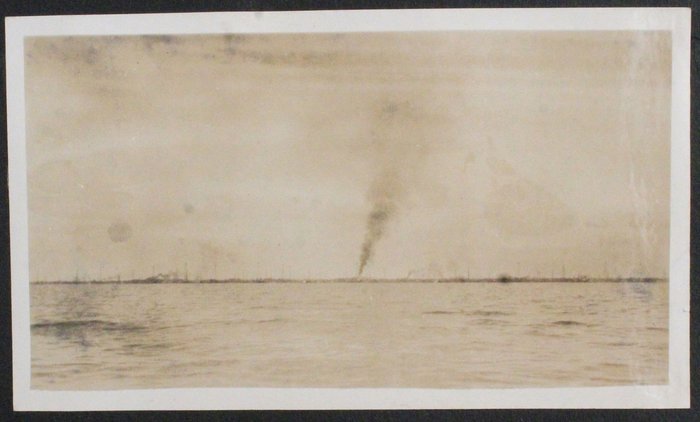
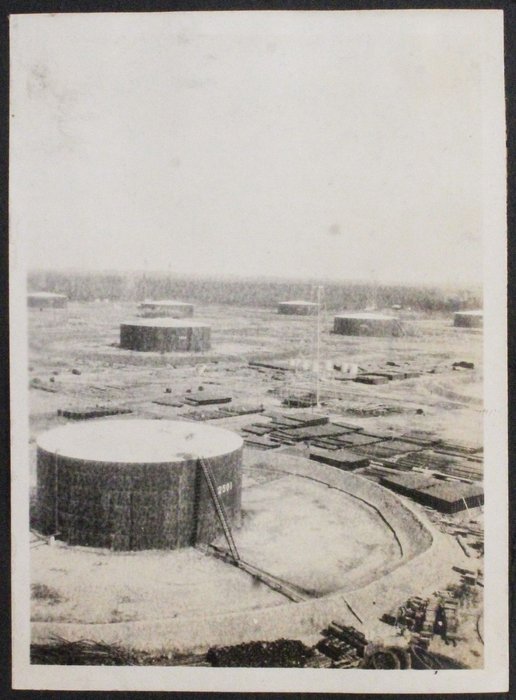
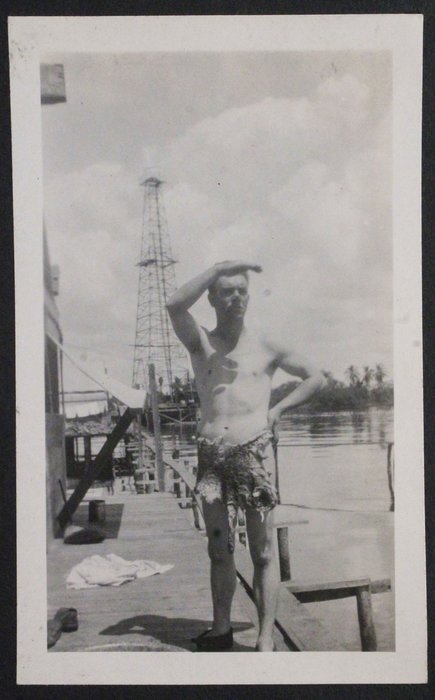

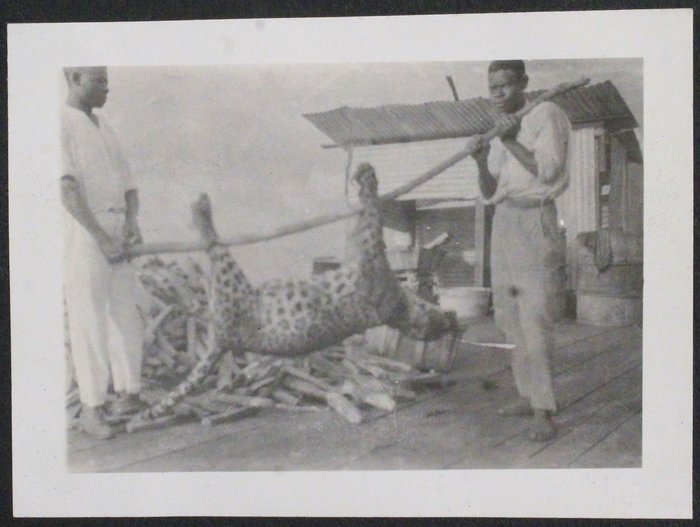
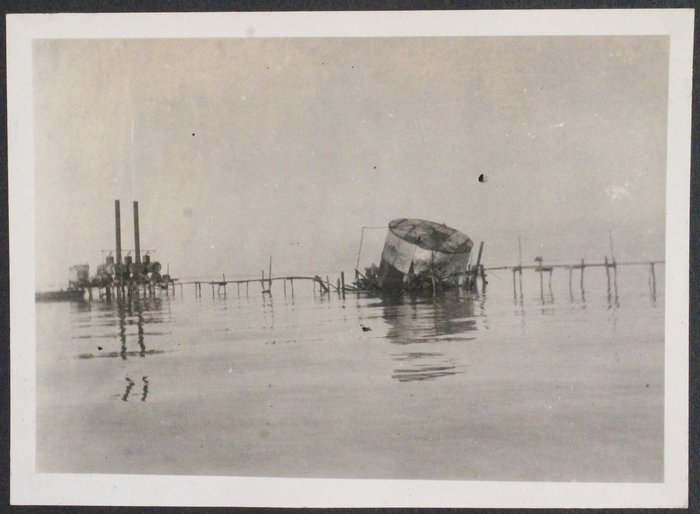
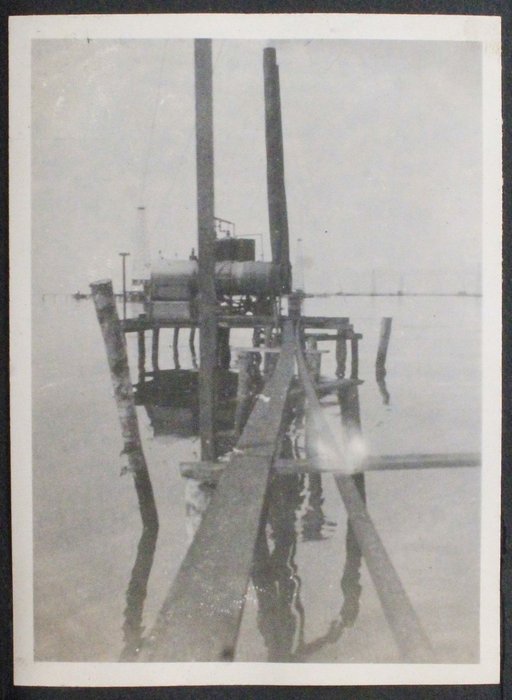
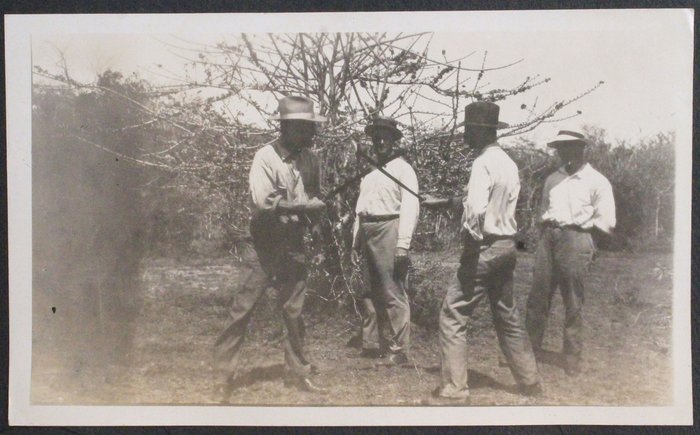

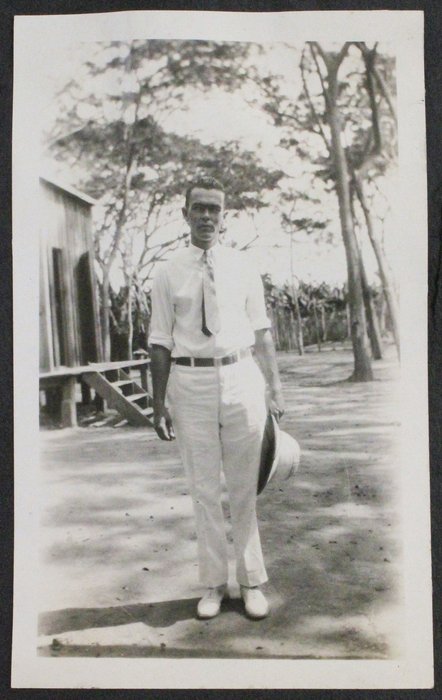
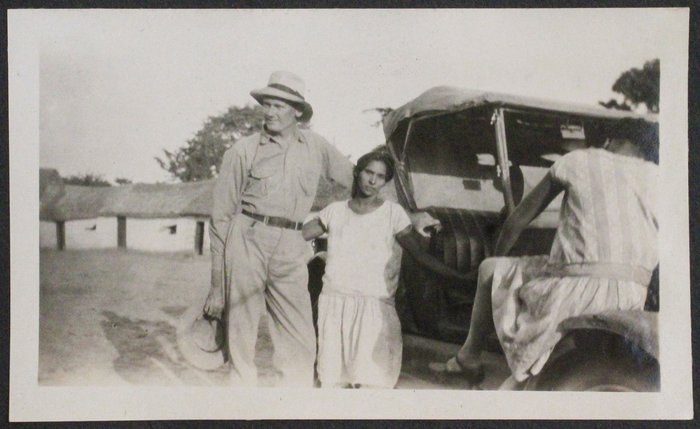
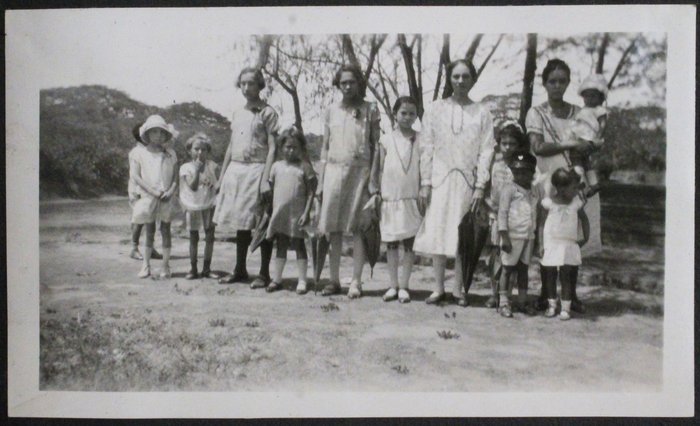
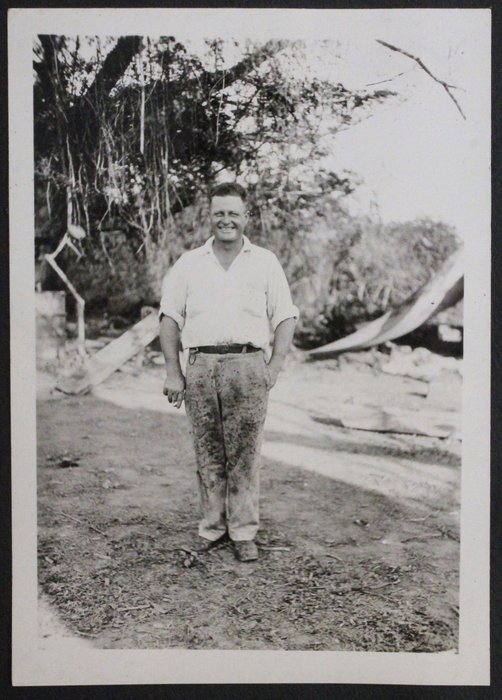
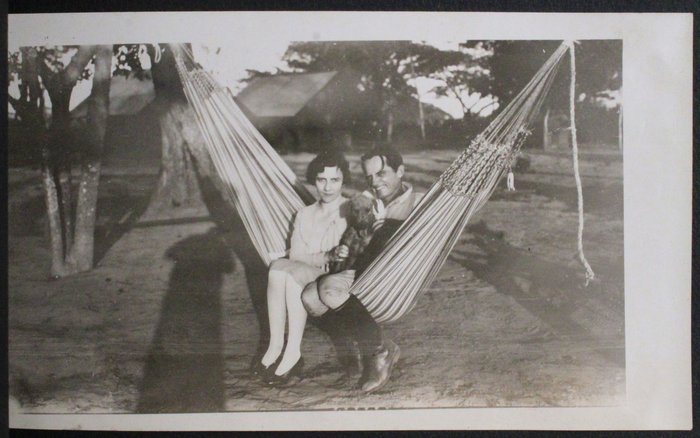
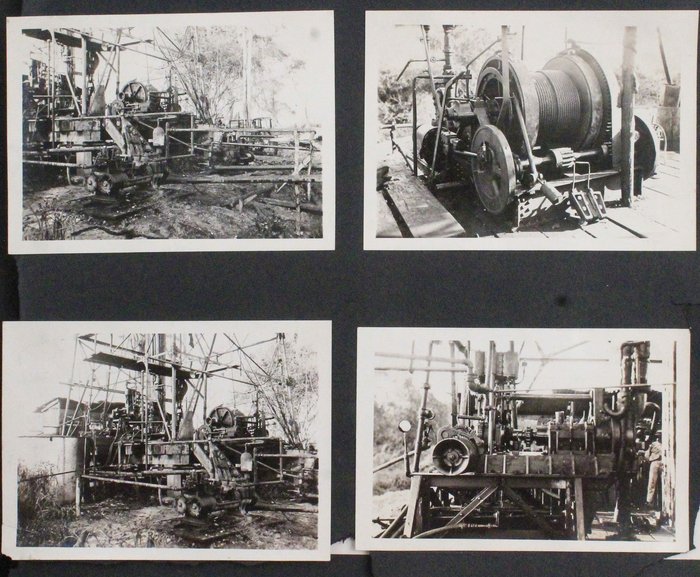
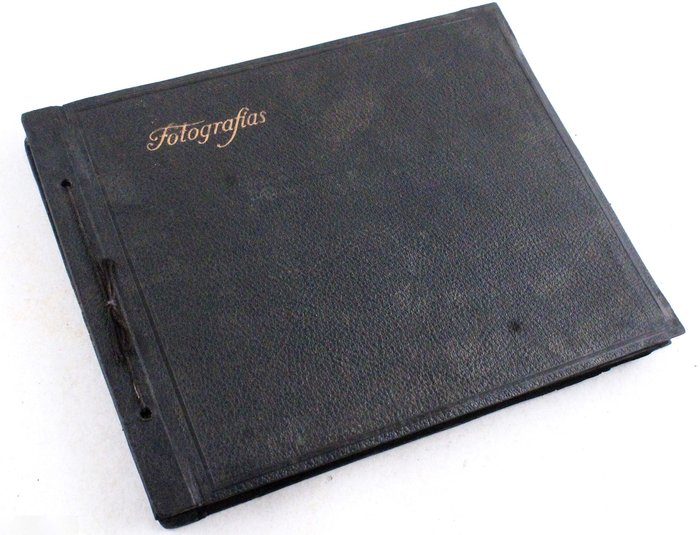
#PC34
Ca. late 1920s
Oblong Folio album ca. 26x32,5 cm (10 ¼ x 12 ¾ in). 35 card stock leaves. With 130 mounted gelatin silver photos, including twenty panoramas ca. 9x25,5 cm (3 ½ x10 in) or slightly smaller, and one larger photo ca. 12,5x18 cm (5x7 in). The rest of the images are from ca. 8x14 cm (3 ¼ x 5 ½ in) or 9x12 cm (3 ½ x 4 ¾ in) to ca. 6,5x9 cm (2 ½ x 3 ½ in). No captions. Later manuscript ink note by A.N. Snook’s brother, William Ora Snook, written on the white tape mounted on the inner side of the front board. Several photos with the ink markings by W.O. Snook, identifying his brother. With two mounted period greeting cards. Period black patterned faux leather album fastened with a string. Gilt-lettered generic title “Fotografias” on the front board; paper label of “L.C. Rhodes. Made by Eastman Kodak Co.” on the inner side of the rear board. Rear board with minor creases and tears on extremities, leaves with tears, chipping and losses on extremities, not affecting the images, one leaf detached from the stub and loosely inserted, a few photos mildly faded, but overall a very good album of interesting strong photos.
Historically interesting extensive collection of original vernacular photos, illustrating the early history of Venezuelan oil exploration and industry on Lake Maracaibo and compiled by a resident of Long Beach, California, Alvie N. Snook. As follows from the manuscript ink note, made by his brother, William Ora Snook (1896-1988): “This album was made up by Alvie Snook sometime in the late 20s – could find no dates. They are taken in Venezuela, S. America, where he went to work in newly developing oilfield on Lake Maricabo (spelling questionable). He was there less than a year and made up this album without dates or coments [sic!]. He talked & wrote home about it while he was there. His picture appears on several of the photos. I have marked some thus ↑. W.O. Snook.”
The album contains well-executed aerial views of the oil fields and industrial facilities, featuring reservoirs, derricks, auxiliary and administrative buildings, living compounds and native villages built on stilts, &c. One photo shows a wrecked oil reservoir, the other one – apparently, a distant fire of an oil field. Another image depicts a building with a partly visible sign “Club” (most likely intended for the Americans and Europeans working on the oil fields). There are also several close-up photos of the machinery with the visible signs “Sullivan” (“Sullivan Machinery Co.”). The panoramas apparently show the oil field and settlement where Alvie Snook worked and lived (located on a small river bank).
The other photos include portraits of native workers, a maid from a local restaurant, Alvie Snook (posing with monkeys, a wild cat skin, a baby deer, hinted birds, a leopard, &c.), American employees (working at the oil fields, posing in a city, on board a ship, driving a motor car with the licence plate “[Est]ado Zulia, Distrito Maracaibo,” &c.). One of the street views was identified as Plaza Baralt in Maracaibo City, with the Church of St. Francis of Assisi in the background. Overall a historically significant collection of original photos from the early years of oil extraction on Lake Maracaibo.
“The Maracaibo oil field was discovered in 1914, the first oil well was constructed in 1917, and large-scale exploitation began in 1922” (Wikipedia). The photos possibly depict the facilities of the American “Lago Petroleum Corporation,” which extracted oil from the concessions on the eastern shore of Lake Maracaibo since 1924. The company was acquired by “Standard Oil of New Jersey” in 1932 and operated under several names until its nationalization by the Venezuelan government in 1976.
According to contemporary newspapers, Alvie Nathan Snook took part in WW1 in the air service (Soldiers Sign Register at Library// The Long Beach Press. 11 January, 1919, p. 2) and in the later years of his life continued working as an “aircraft machinist” (Obituary Notices// Independent (Long Beach, CA). 11 February 1956, p. 14).

